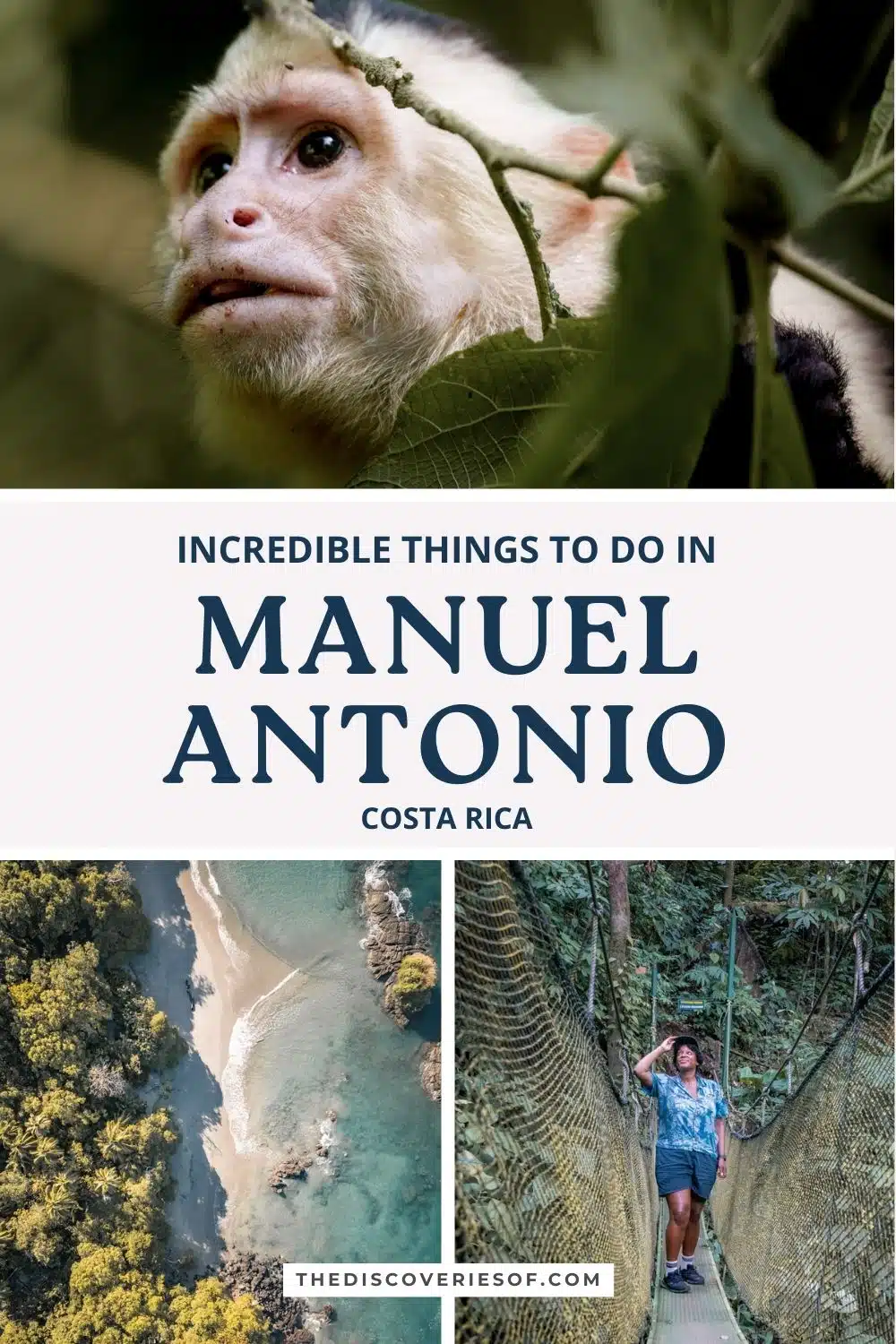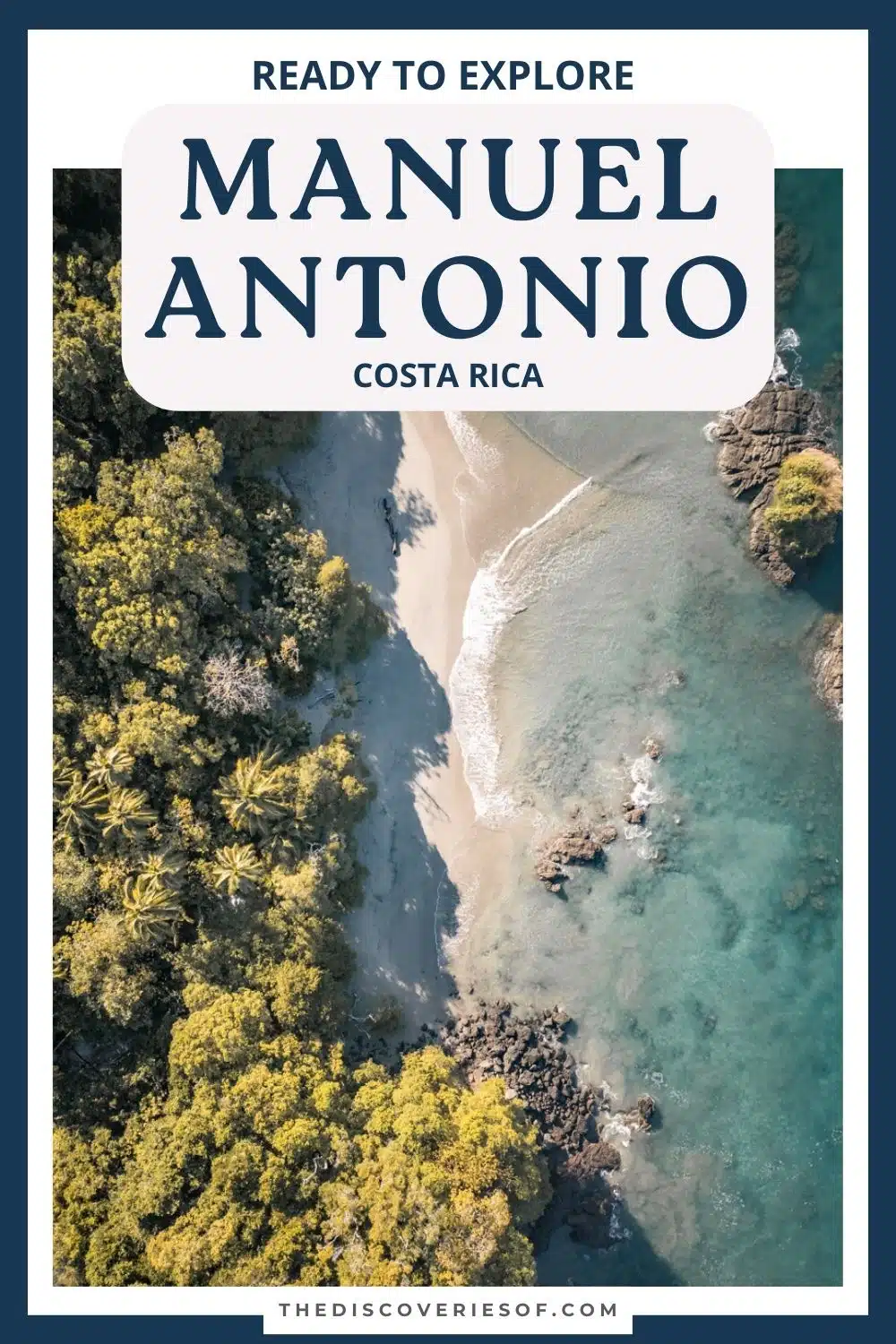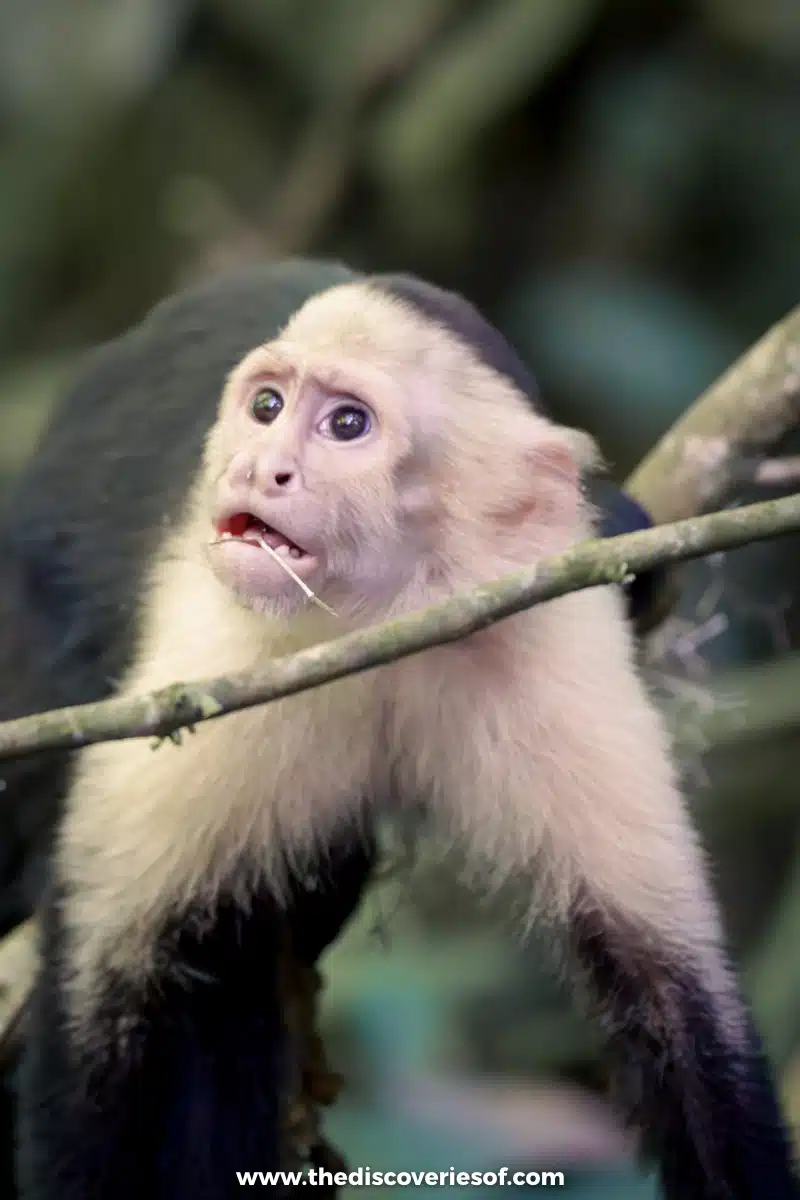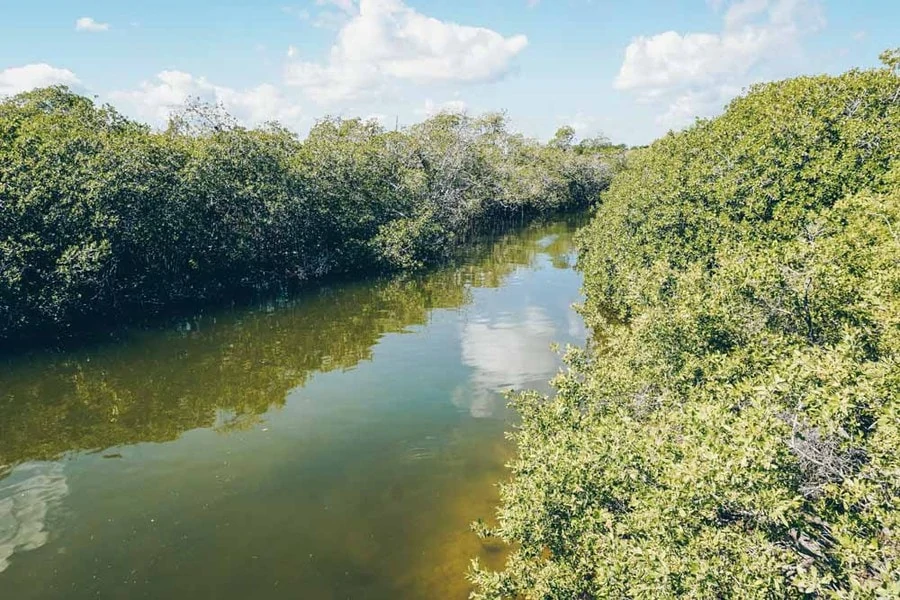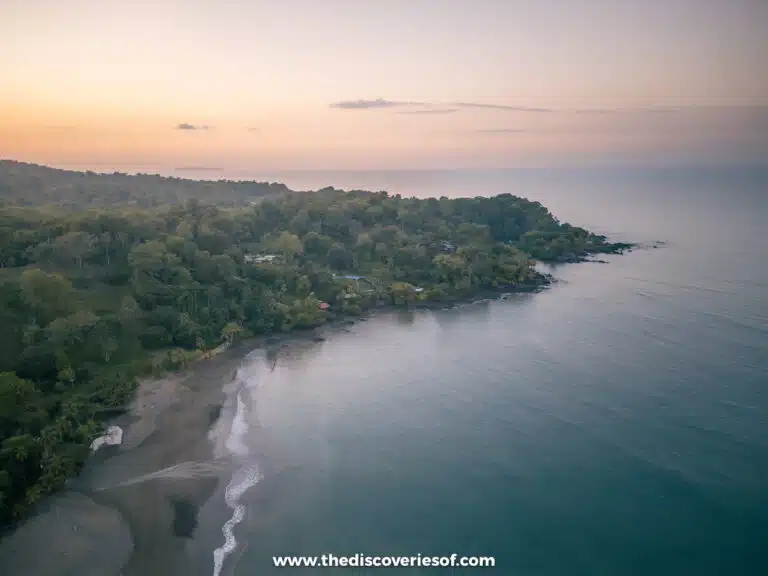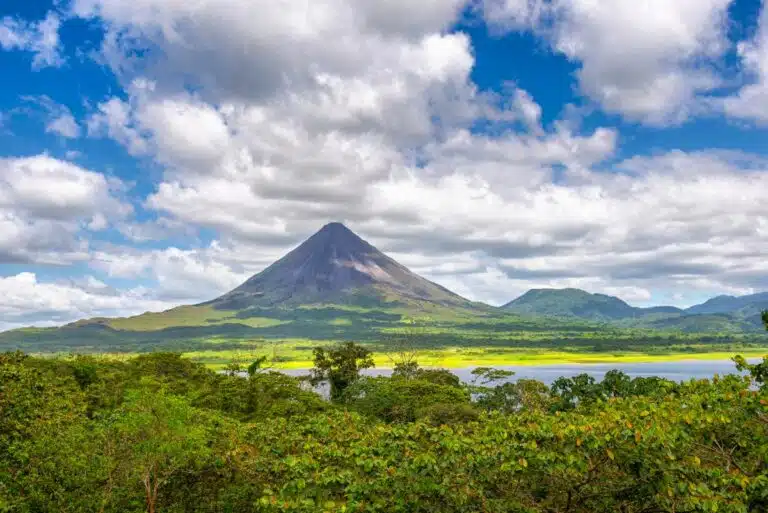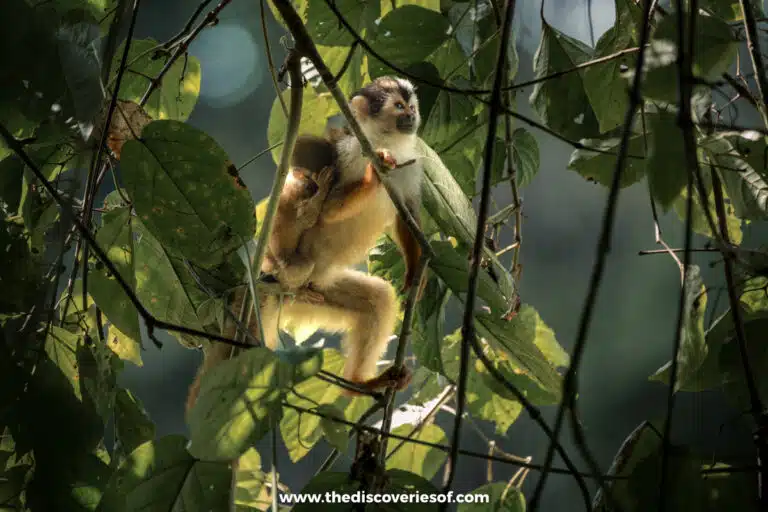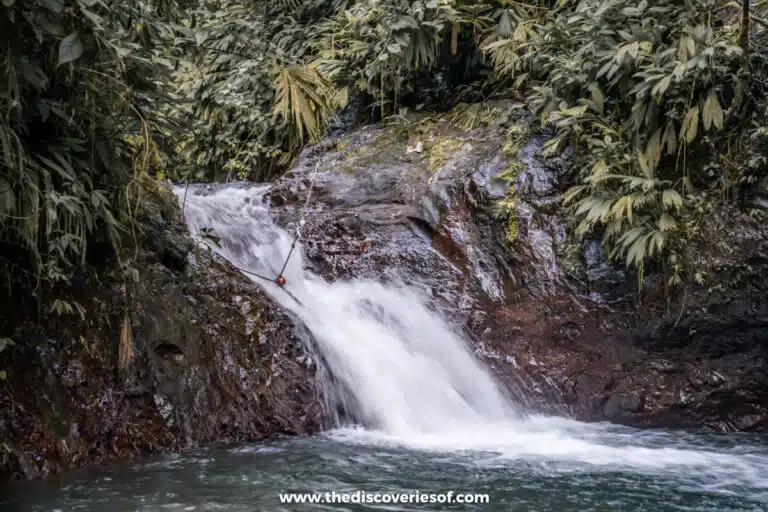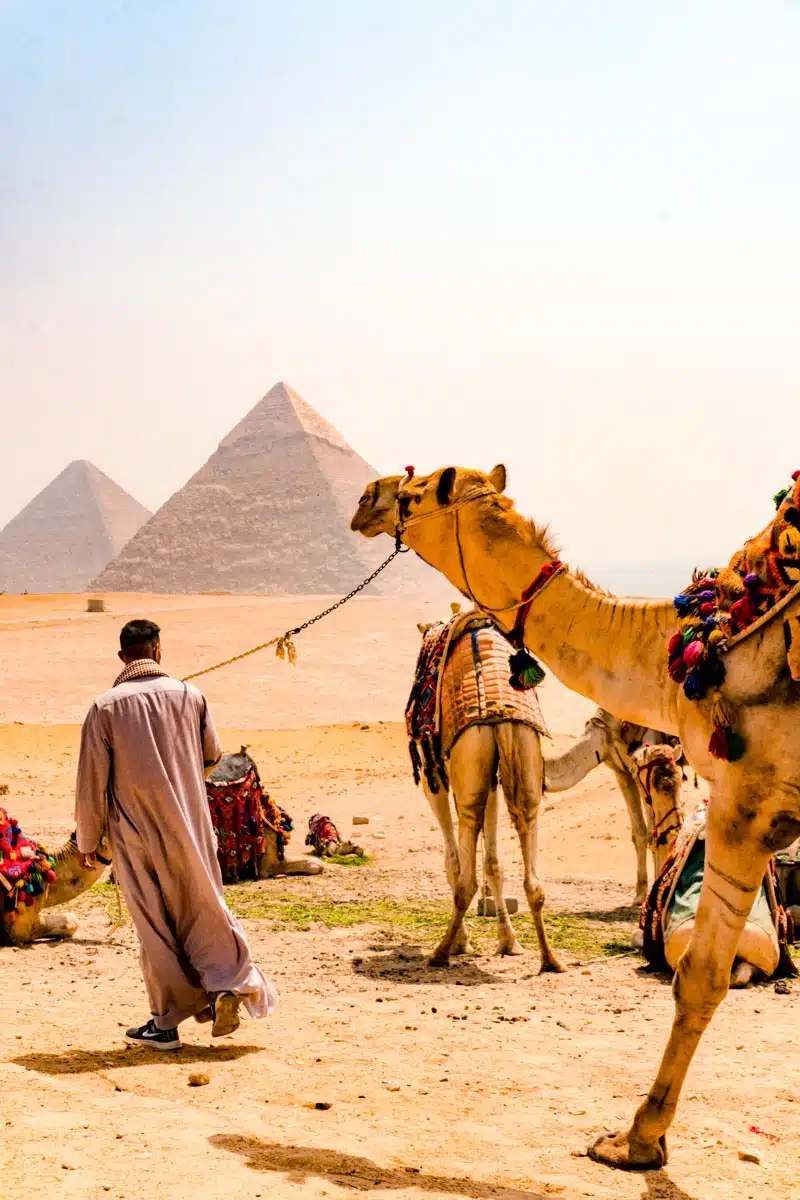Ready to explore one of Costa Rica’s most beautiful destinations? Delve into the best things in Manuel Antonio – including that incredible national park – with this guide.
Lots of people make a beeline straight for the national park in Manuel Antonio, largely ignoring the surrounding area. Total mistake. That’s not to say Manuel Antonio National Park isn’t an unbelievable experience – it is… it’s just there’s so much more to explore beyond its borders.
The thing is, beyond the park, Manuel Antonio is an incredible destination and one of Costa Rica’s most alluring spots, a tropical maze of lush beaches, relaxed vibes and open-air restaurants – with more than its fair share of natural attractions thrown in for good measure too.
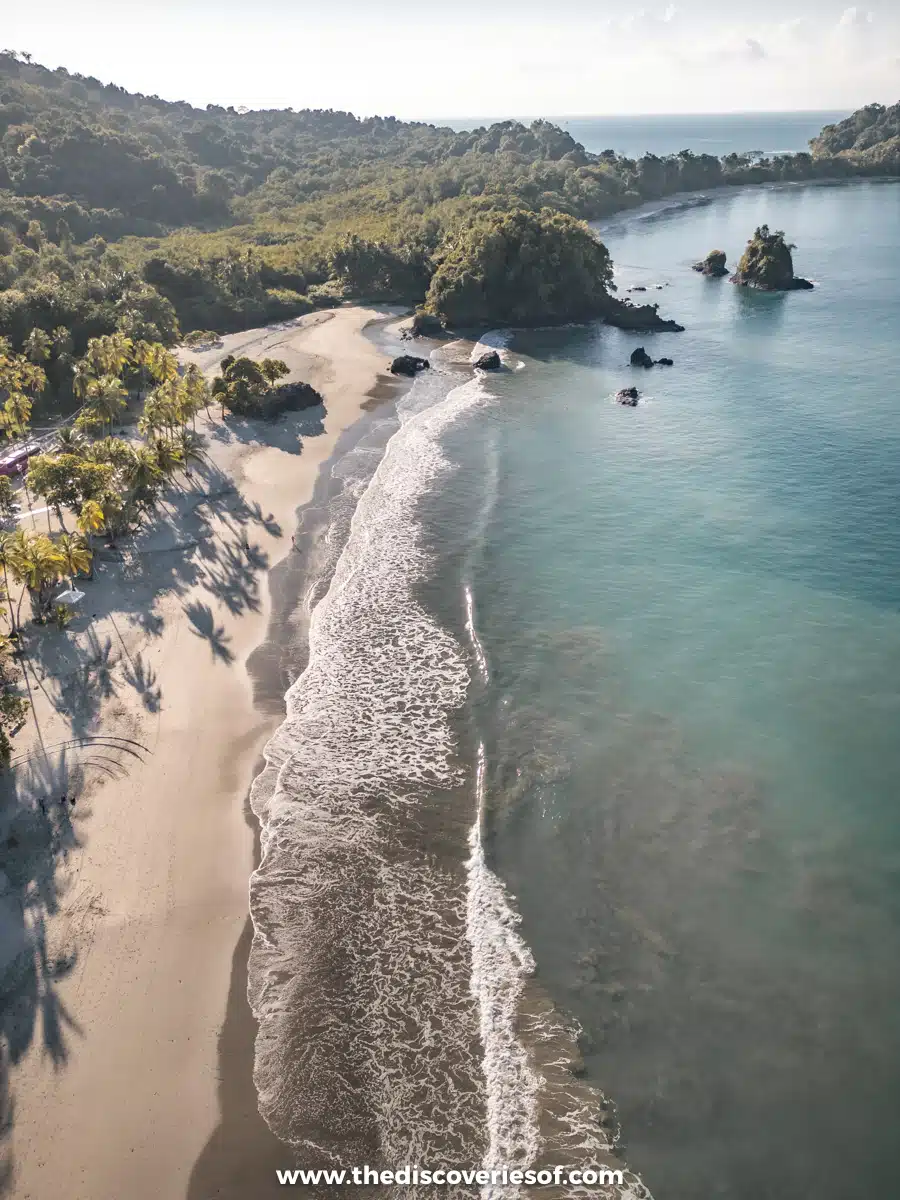
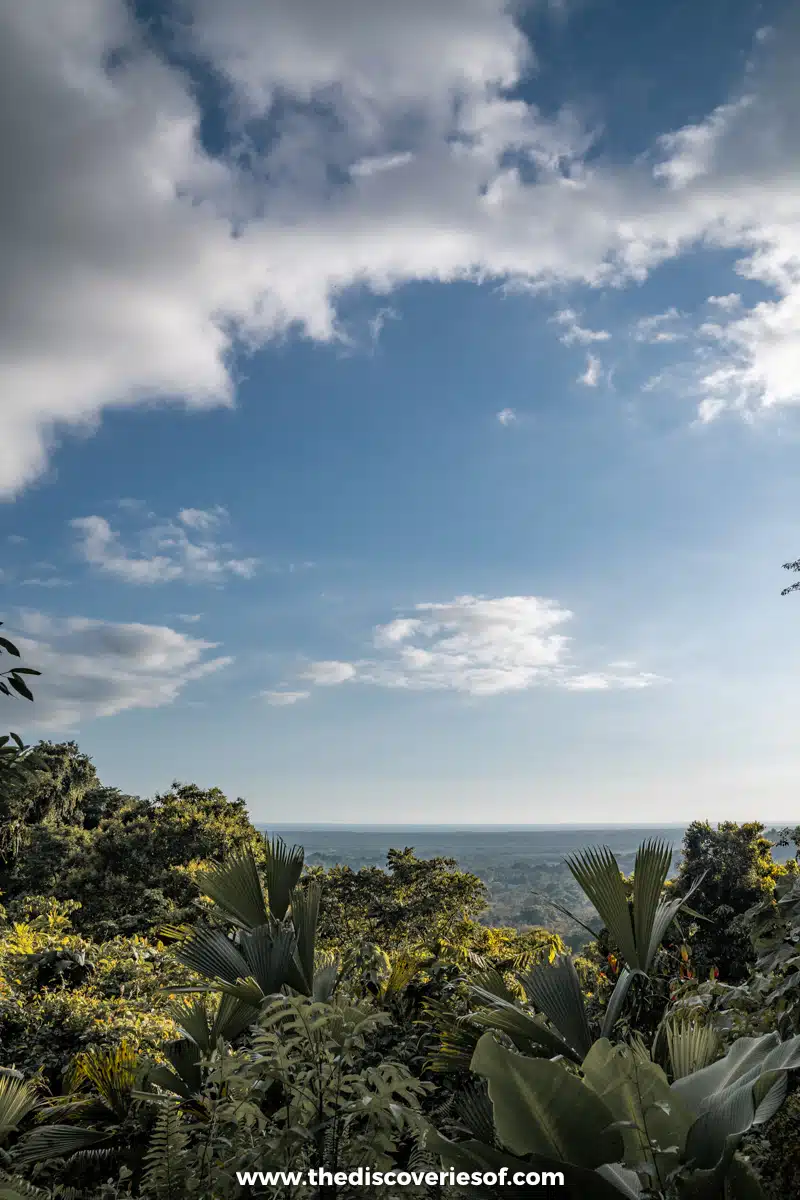
The naming doesn’t exactly help: there’s Manuel Antonio (the town), Manuel Antonio National Park and nearby Quepos.
I’ve just returned from another research trip to Costa Rica, one in which I dove down deep to explore Manuel Antonio and boy, am I glad I did.
I spent days hiking surrounded by abundant wildlife, beach days followed by some of the most spectacular sunsets I’ve ever seen, drove around the surrounding area following up leads of little-known destinations … all to create this cracker of a guide so you can explore the best of Manuel Antonio too.
Let’s dive into the beaches, hidden gems, and (of course) national park that make Manuel Antonio a must-visit.
Or watch my Manuel Antonio guide on YouTube!
Things to Do in Manuel Antonio
Visit Manuel Antonio National Park
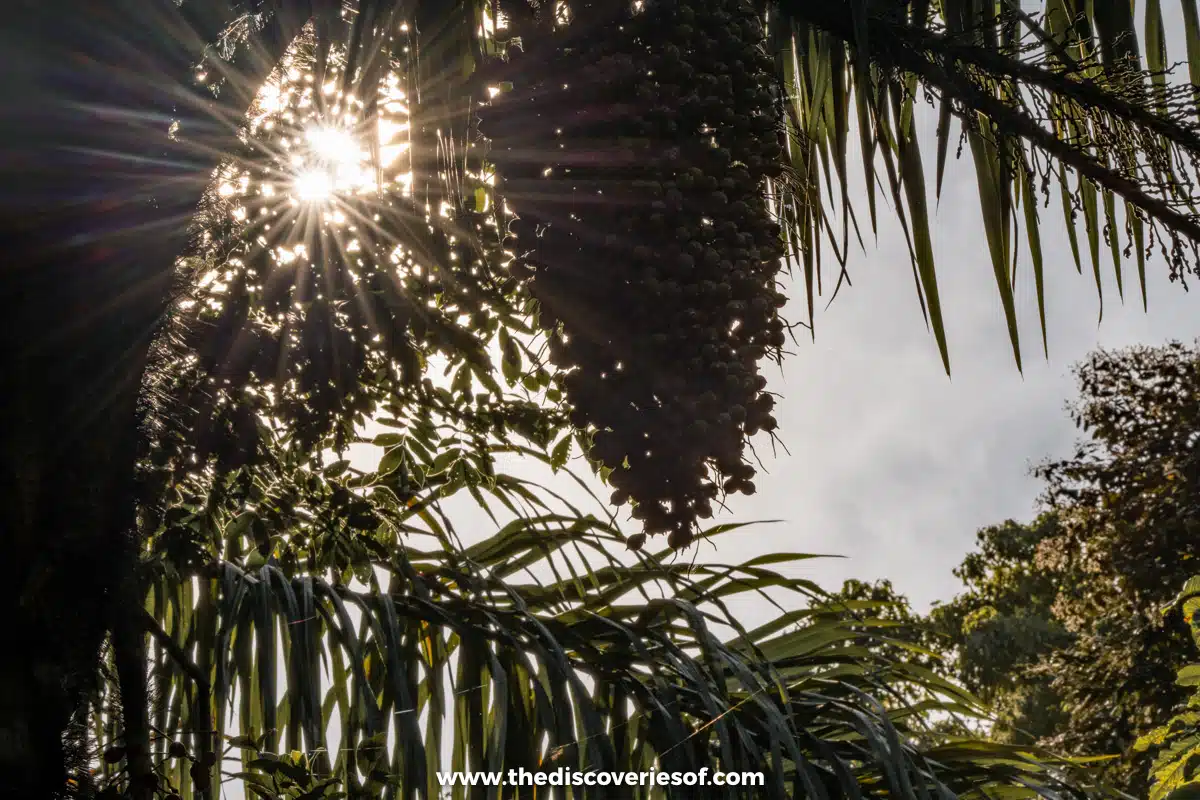
As I mentioned, most people visit Manuel Antonio to see the national park. And you quite honestly can’t make your first (or really any) trip here without seeing the beaches, jungles, and wildlife inside the gates.
Costa Rican Indigenous tribes lived in this area hundreds of years before Spanish explorers arrived. More recently, foreign businesses wanted to expand it as a tourist hub, but locals convinced the government to turn it into a national park in 1972, protecting the land. We should all be thankful they did.
Manuel Antonio National Park isn’t very large (it’s only 16 square kilometres) – in fact, it’s actually the smallest national park in Costa Rica. It’s also one of the busiest, which is no surprise.
Take a walk around the hiking trails or swim out into the gently rolling waves, and you’ll discover the sheer beauty that draws over 150,000 people each year.
Top Tip
There are 109 species of mammals and at least 184 species of birds in the park. Bring. Your. Camera.
Wildlife in Manuel Antonio National Park
There are lots of animals in Manuel Antonio National Park. The rainforest canopies are home to hundreds of mammals and birds, and you’ll find a few surprises (hint: sea turtles) on the beaches, too.
Ready for all the nature you can handle? Here’s a sneak peek at some of the wildlife you can expect to see in the park.
Sloths
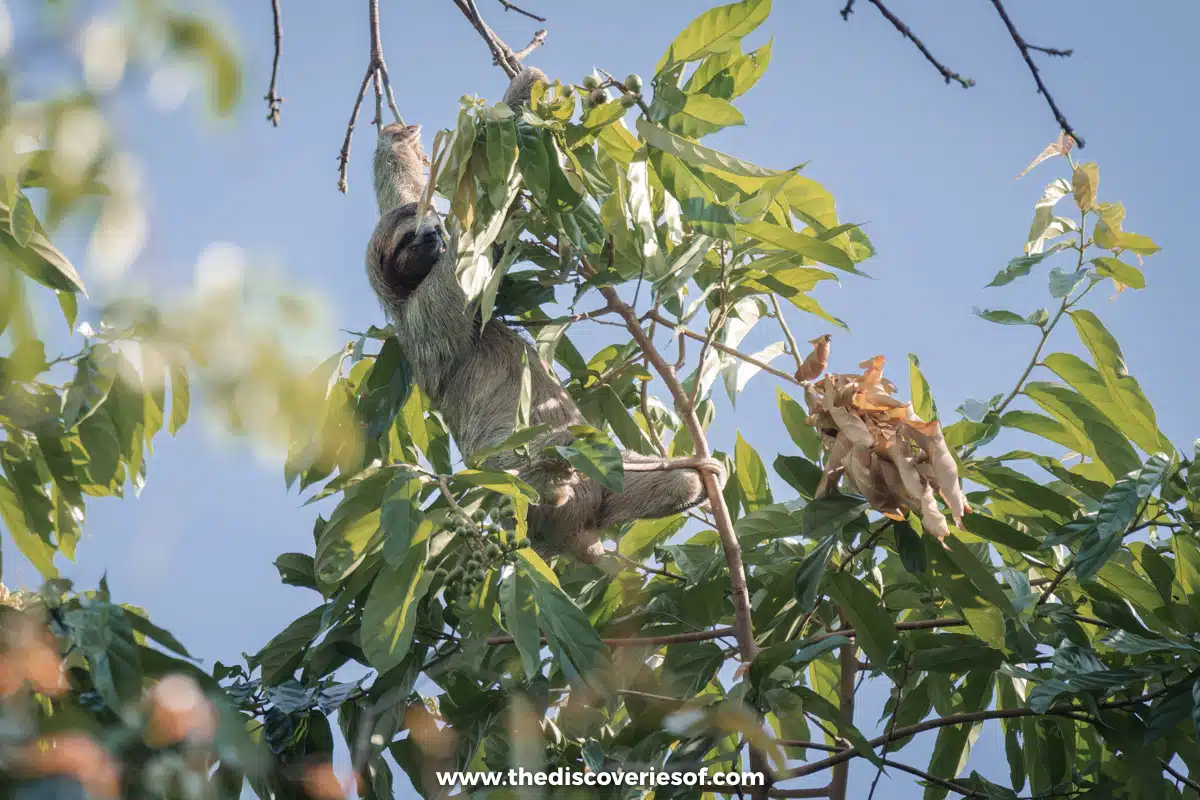
You’ll find both two-toed and three-toed sloths in the park (don’t worry, you can see the difference rather easily).
It’s not just the number of digits that differ in the two types of sloths. The two-toed are quite a bit larger and much more active early in the morning.
My tour guide lent me their telescope, which allowed me to see one jump from tree to tree.
You may spot the three-toed, too, but they’ll likely be taking a nap during the day.
Toucans
I can’t think of Manuel Antonio National Park without the image of a large toucan with its colourful beak and bright yellow breast perched in the jungle forests.
While Corcovado has more species, you have an excellent chance of seeing two kinds of toucans while you’re here.
Both the collared aracari and fiery-billed aracari live inside the park. You have to look up in the trees, but their signature beaks and chirping/growling sounds help you locate them quickly.
Monkeys
Like Corcovado, you’re going to find 4 types of monkeys in the park. Here’s how to identify each.
White-Faced Capuchins
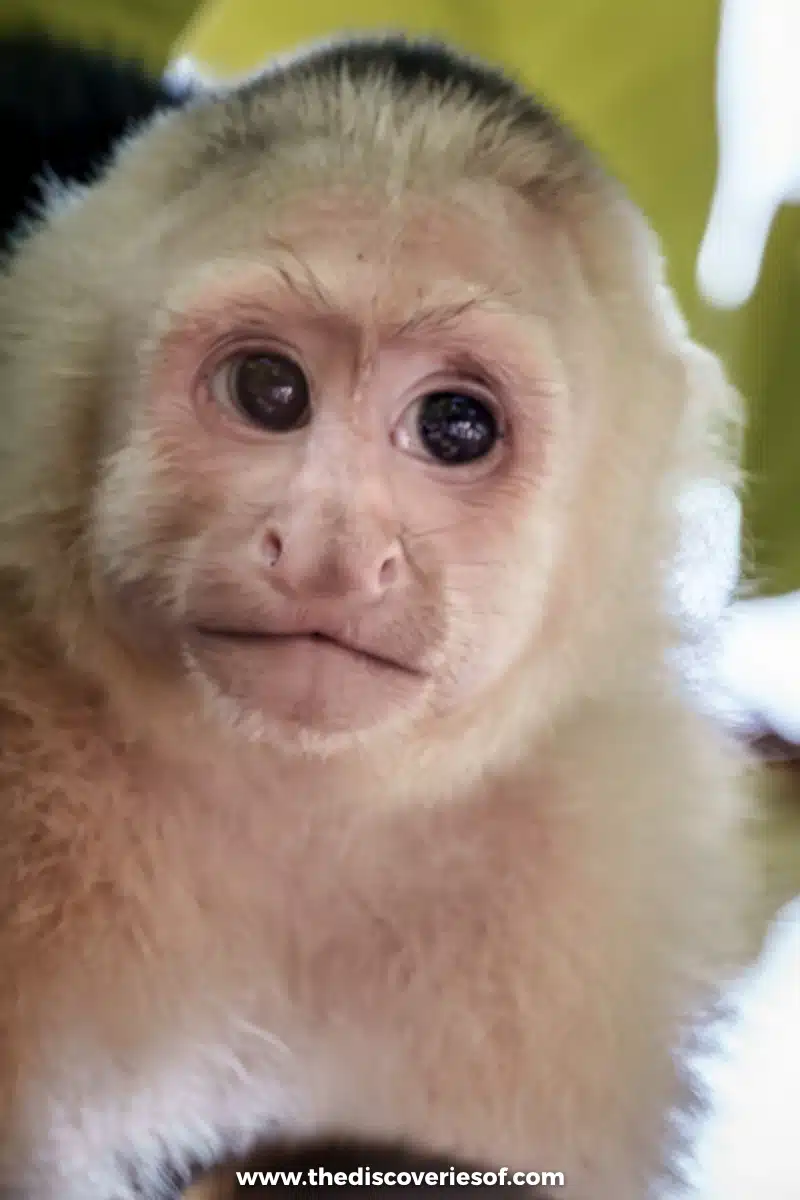
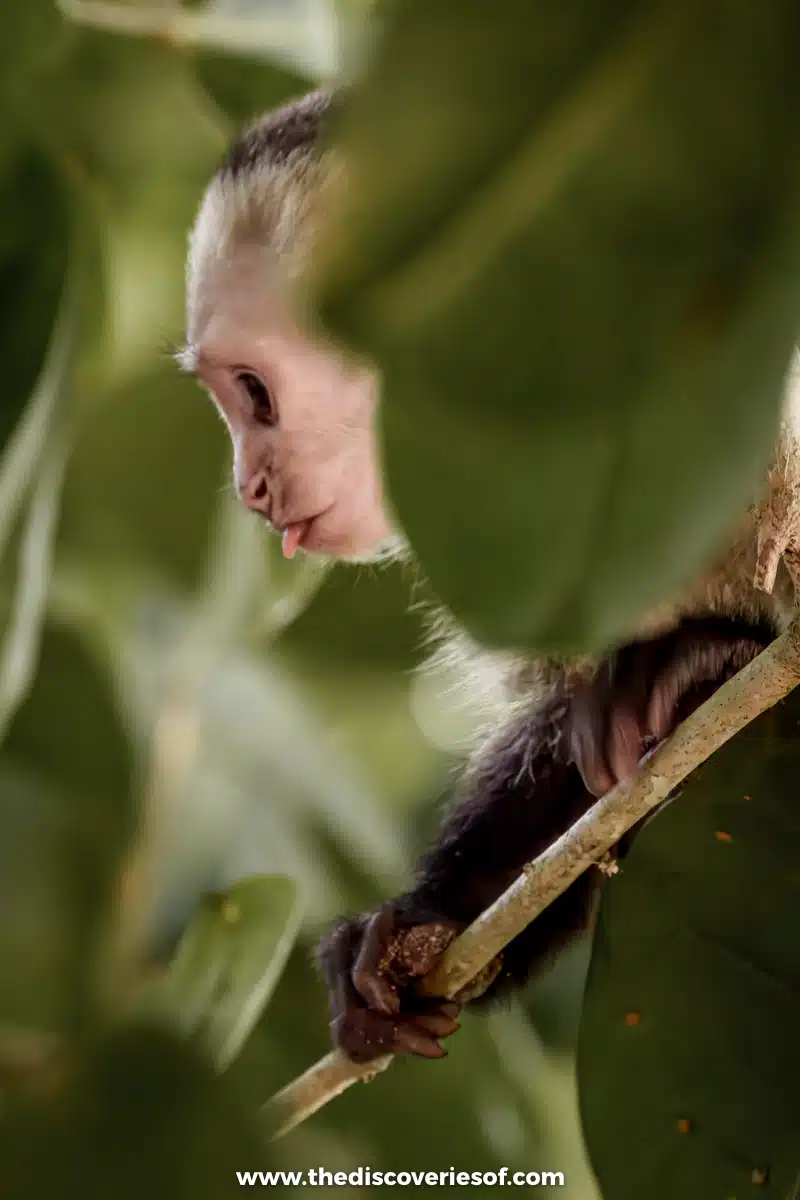
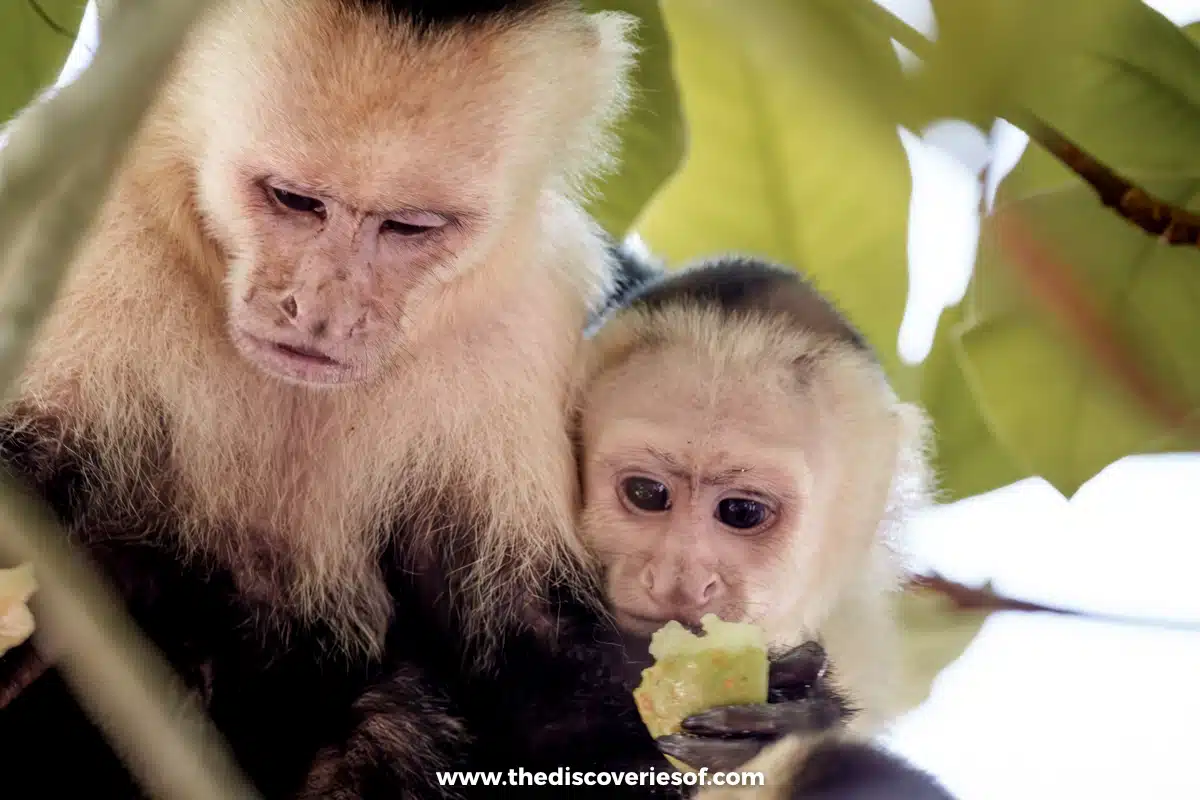
White-faced capuchins are the infamous monkeys in monk’s coats that roam the rainforests and beaches, seeking any opportunity for a snack.
They have a dark brown and white coat and feisty temperament that make them a riot to watch.
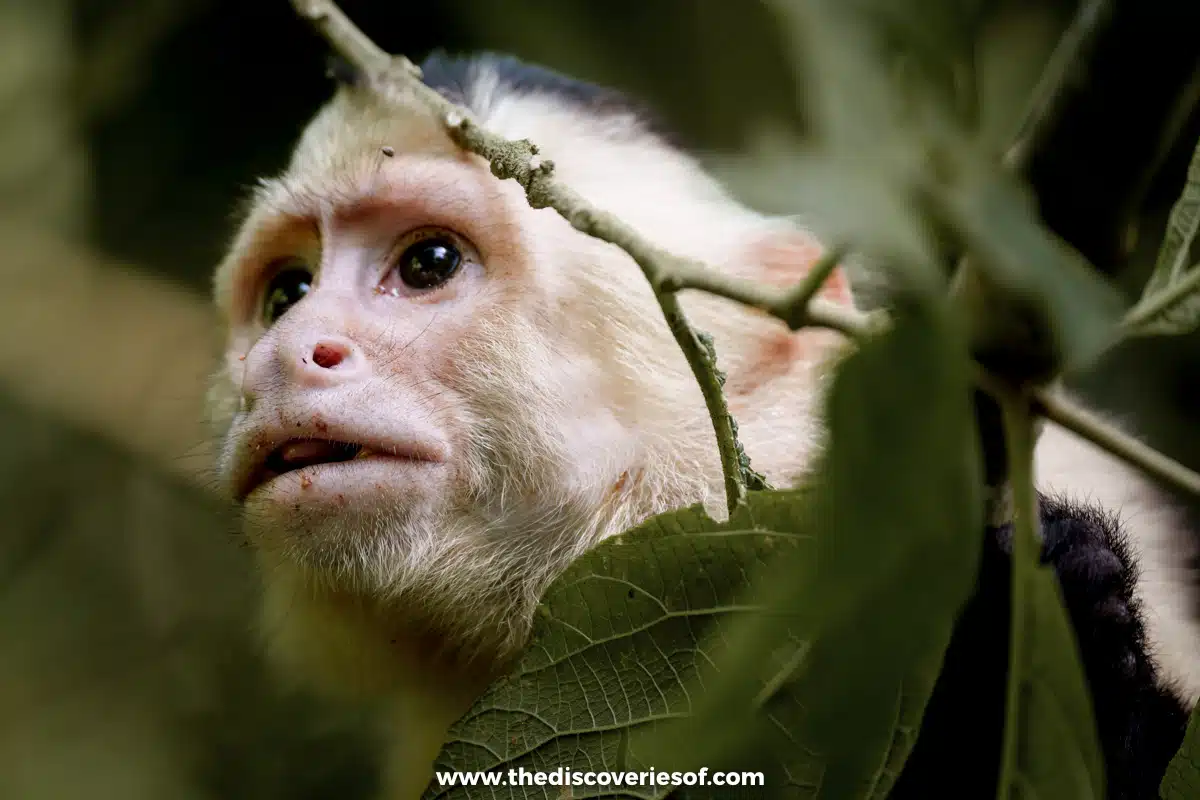
You can’t bring food into the park, but one woman did, and a capuchin snatched her bag right up and ran off for a snack, so yeah… don’t do that.
Geoffroy’s Spider Monkeys
These are the rarest monkeys in Manuel Antonio, an endangered species that no one is quite sure exactly how many are left.
Named after Étienne Geoffroy Saint-Hilaire, the spider monkeys can reach almost two feet and have long tails and arms they use to swing around the rainforest canopies.
Mantled Howler Monkeys
You won’t need to strain to hear one of the world’s loudest animals, the mantled howler monkeys in Manuel Antonio Park.
Seeing them is a bit more difficult, but using a telescope or binoculars you can see them up in the trees.
Central American Squirrel Monkeys
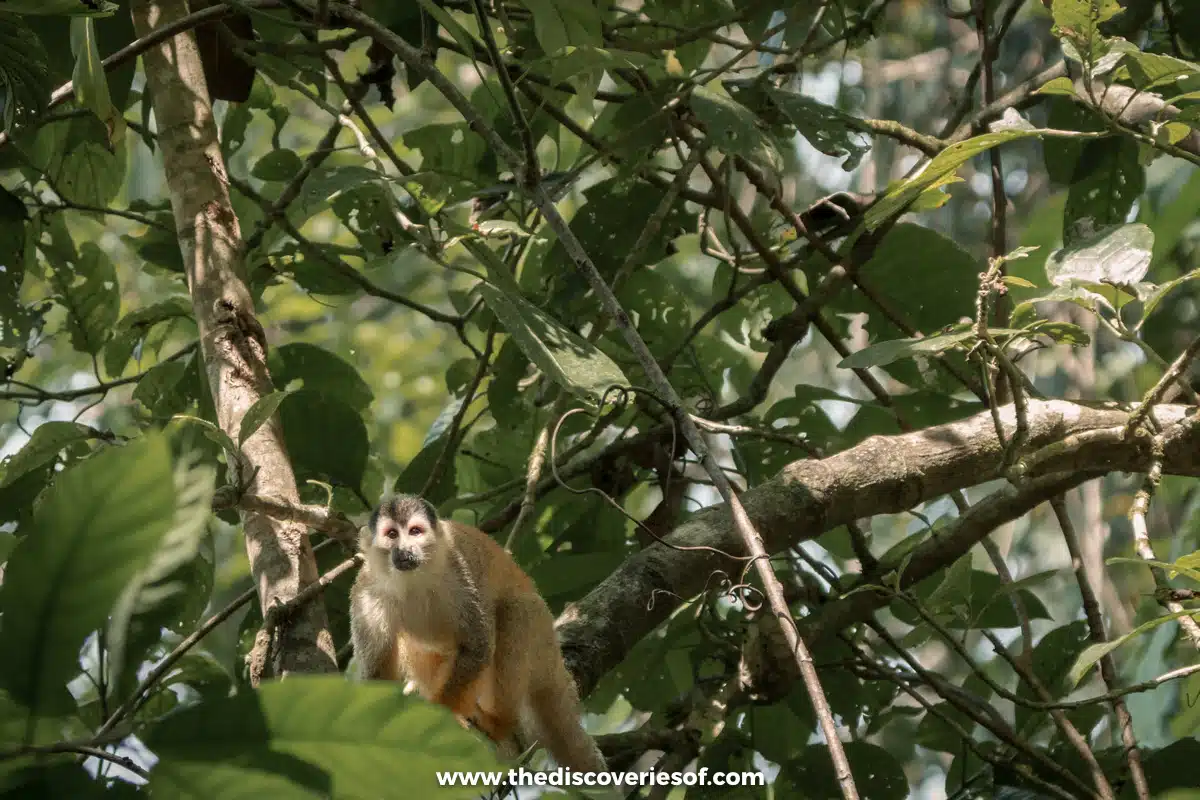
Another of the most active monkeys in the park, these small monkeys have greyish coats and pale, hairless muzzles.
You can see them in the trees and on the trails, so keep an eye out.
Sea Turtles
During nesting season, look for sea turtles around the sandy beaches in the park.
The most common sightings are Olive Ridleys, which are a rather small sea turtle that nest here from June to December.
Iguanas
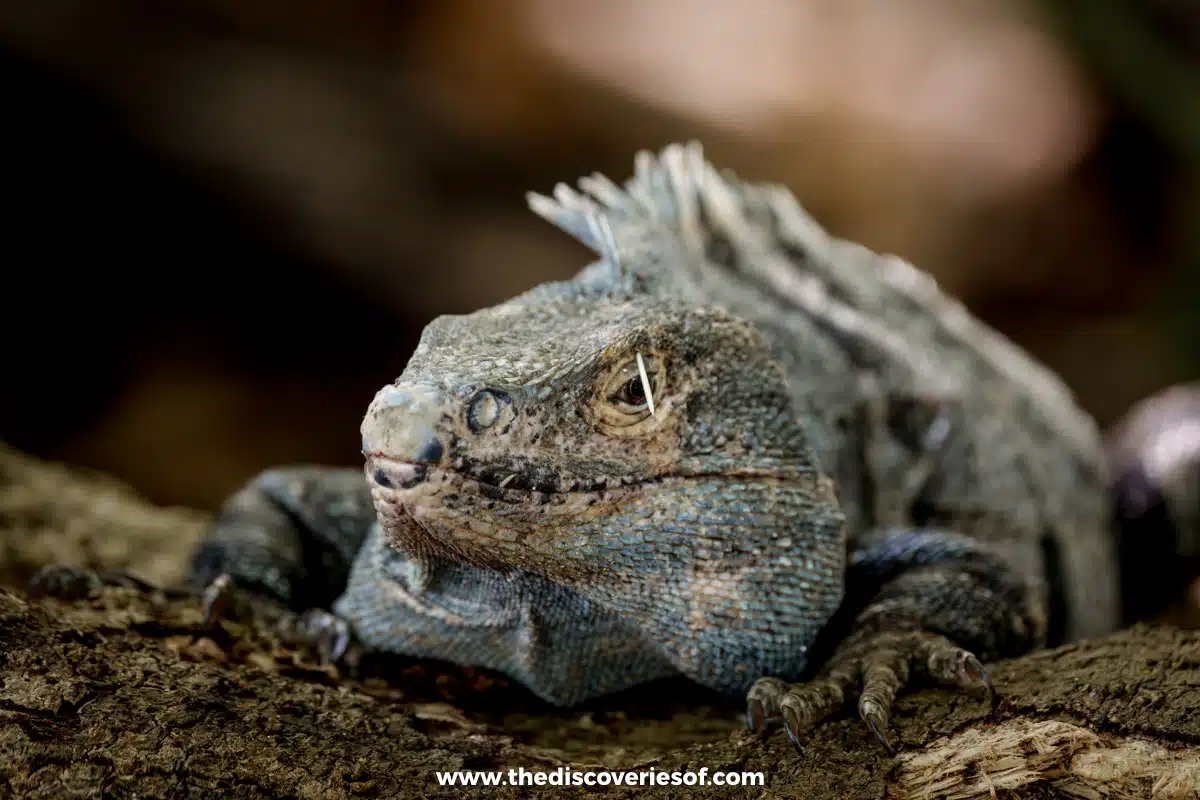
I knew I was in for a treat when I saw monkeys and iguanas at my hotel, and there were plenty more of both at the park.
The black spiny-tailed iguana is a large grey and black lizard you can often see chilling out near the beaches.
Spend Time on Manuel Antonio National Park’s Beaches
You know I’m always down to flop and drop in the sand. Add your swimwear to the top of your packing list when you visit Manuel Antonio.
Manuel Antonio has some of the best beaches in Costa Rica right in the heart of the park. Here’s a look at a few you need to see for yourself.
Playa Manuel Antonio
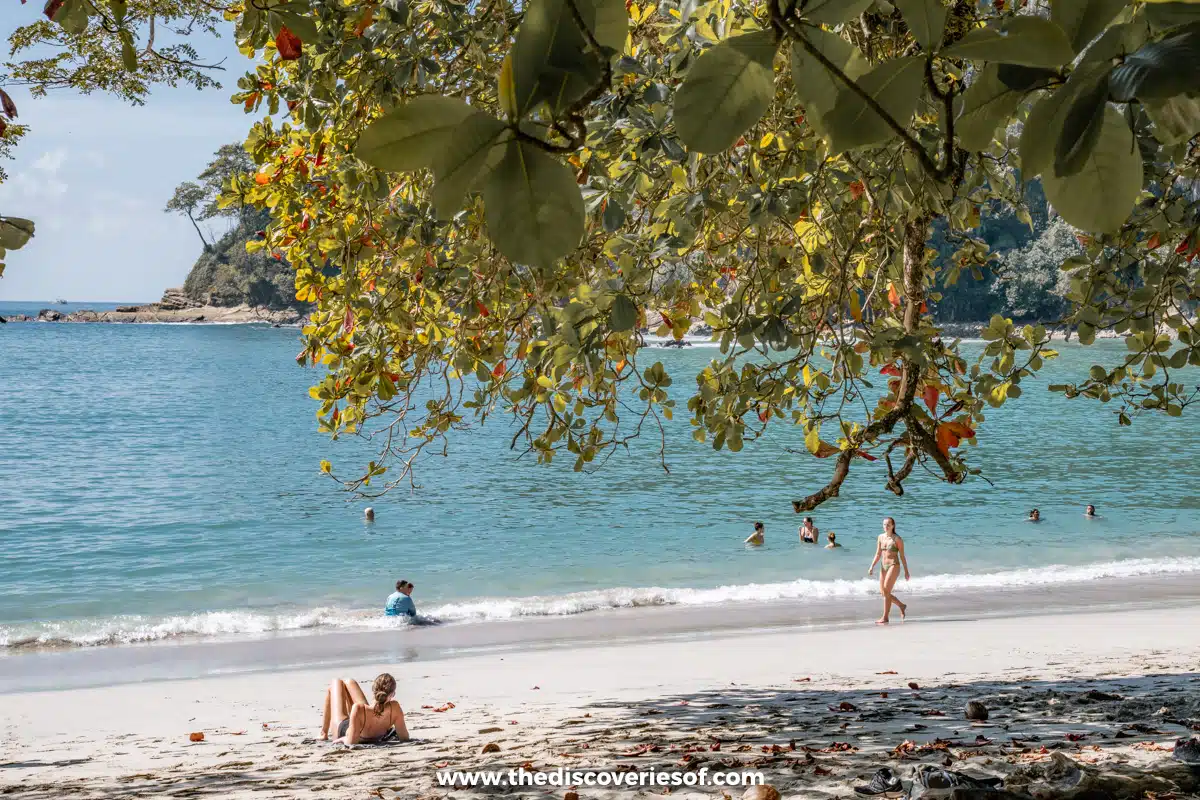
Set yourself up early and away from the trail to enjoy the bright azure water and snow-white sands at Playa Manuel Antonio.
It’s a relatively large beach that’s excellent for swimming. I personally wouldn’t bring snorkelling gear, as the waters aren’t always all that clear.
Playa Espadilla Sur
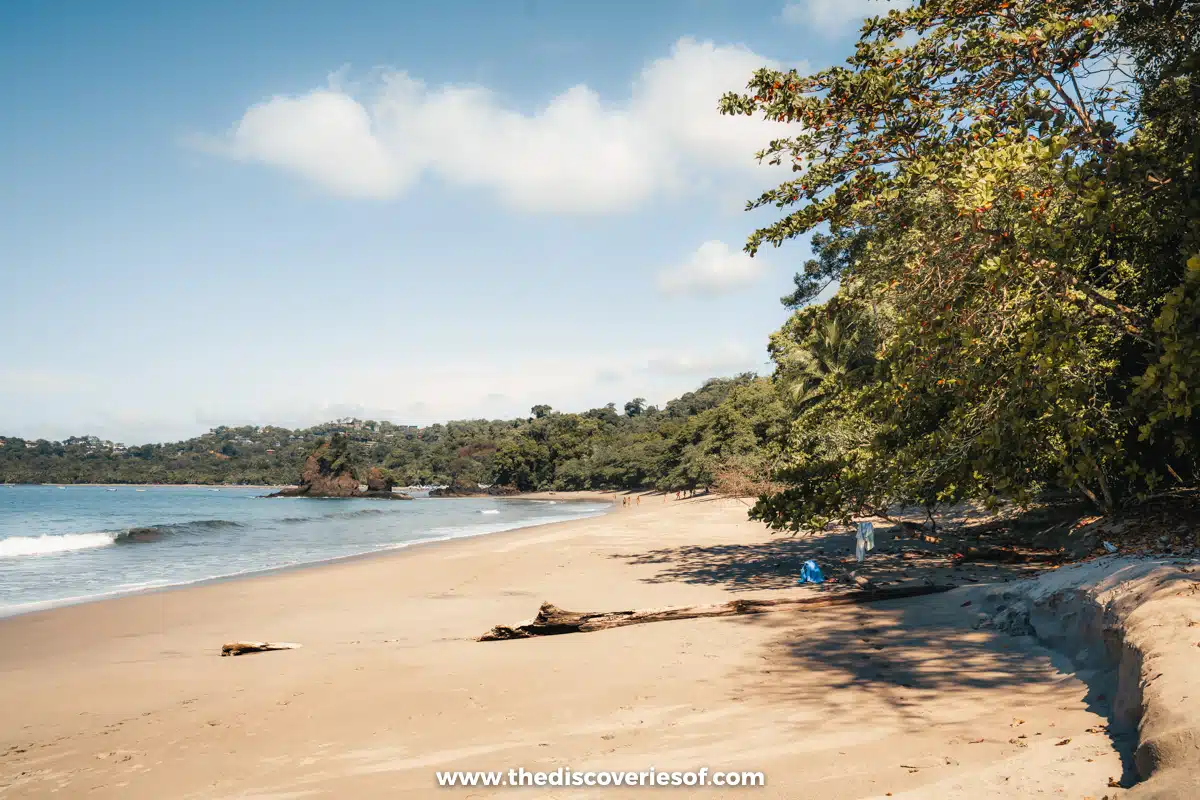
Another gorgeous beach (and my favourite) you’ll find inside the park’s limits is Playa Espadilla Sur.
It’s a stunning white sands beach backed by dense tropical forests and low-key my favourite on the trip because…. It’s a lot more low-key.
Playa Gemelas
Head south to reach Playa Gemelas, a pair of picturesque coves on the park’s south side.
You can get there on a short hike from Playa Manuel Antonio, which I recommend for anyone seeking a quieter, more intimate coastal experience.
Top Hikes in Manuel Antonio National Park
Sendero Perezoso Trail
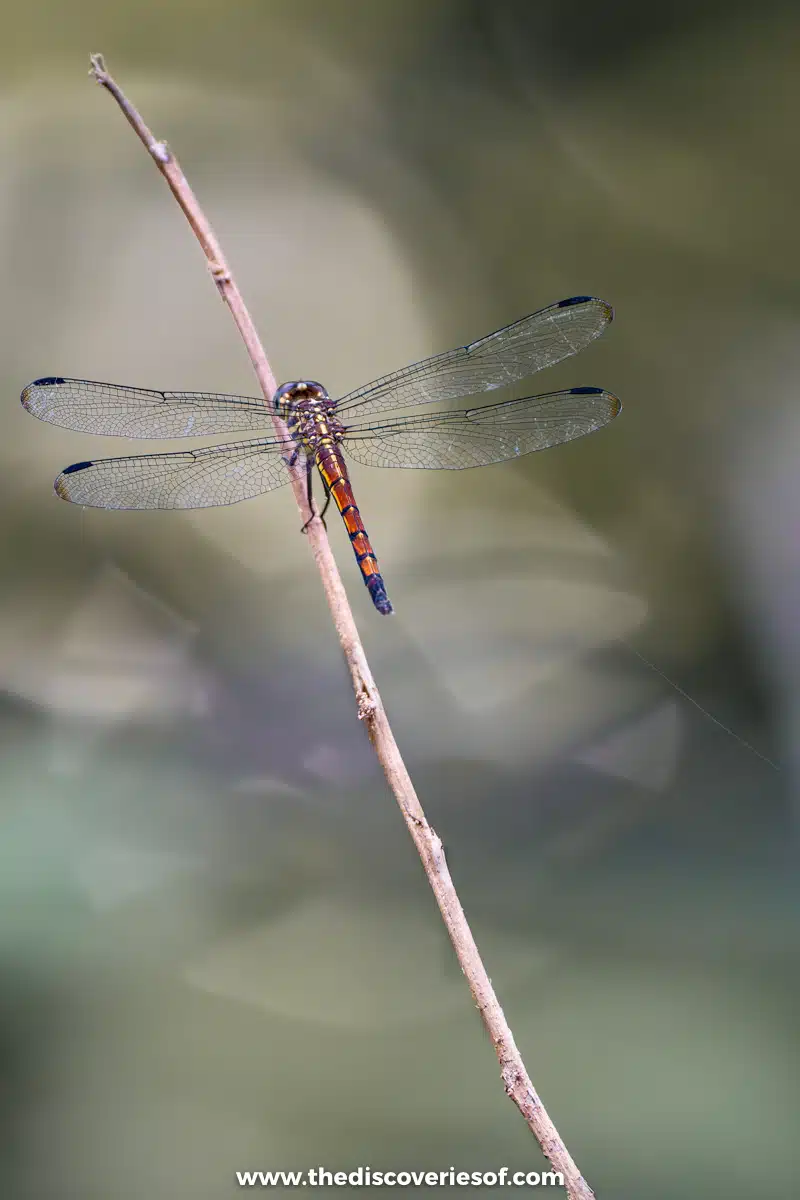
Sendero Perezoso Trail (“Sloth Trail”) is an extremely popular route that leads to the famous Manuel Antonio Beach.
The 2.1-mile out-and-back hike starts near the entrance and works its way through mostly flat jungle trails on the way to the beach.
It was a great place to see sloths (my guide helped locate one), and it’s also one of the best birding trails in the park, home to a whopping 350 species. You’ll find toucans, hawks, macaws, and many other beauties – bring a good camera lens.
Once you get to the beach, walk away from where the trail ends for a quieter spot.
Prepare to spend a good amount of time at Playa Manuel Antonio. The jungle forests frame the bright blue waters magically.
Top Tip
Do this hike as early as possible, as it’s one of the most popular and gets very crowded.
Manuel Antonio, La Trampa, y Playa Gemelos
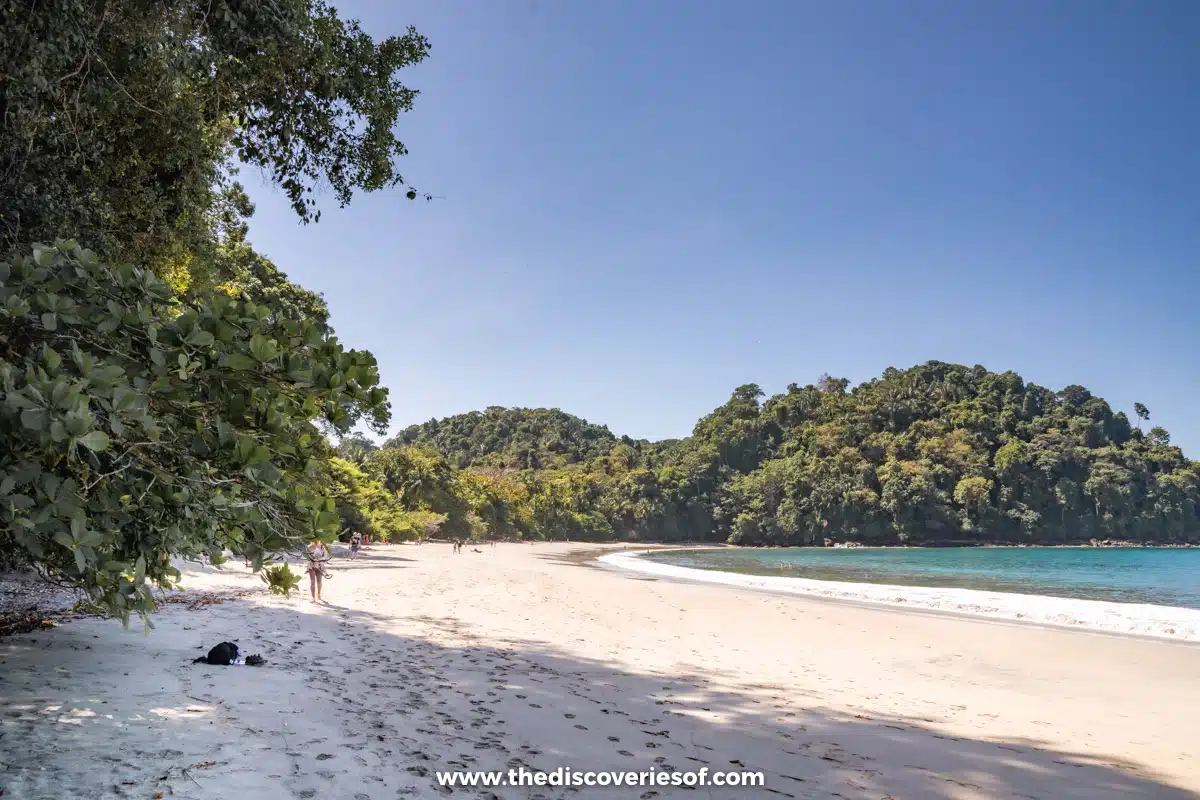
This is one of the most popular hikes in the park, and it’s no wonder why. It really gives you a well-rounded look at most of the rainforest and beaches.
Covering 4.8 miles, the loop trail is one of the longest hikes in the area. Unfortunately, recent trail closures have cut off access to a few areas along the trail. Don’t worry, it’s temporary.
You can still get to Playa Gemelas Beach, which I highly recommend doing. The coves offer a chance to escape the crowds and capture some beautiful views of the Pacific Ocean.
Manuel Antonio Beach is also a short hike away.
Despite closed sections, this is one of the most beautiful hikes in the park. You’ll see monkeys, iguanas, and maybe even a sloth or two if you’re lucky.
Sendero Mirador
This hike is tucked away on the eastern side of the park and isn’t quite as crowded as other trails you’ll find.
It’s a short hike (around .7 miles), but the payoff is simply breathtaking.
First, you’ll make your way up the steepest sections of the park, so bring a good pair of boots and poles. Grab your binoculars, too. There is lots of wildlife in this section of the park.
Sightings range from monkeys to iguanas to crabs, all before you wind up with some of the best ocean views from afar.
Top Tip
If you wait until around 2:30, you can see the beginning of golden hour over Punta Serrucho, the wild coastline along the Pacific shores.
Tips for Visiting Manuel Antonio National Park
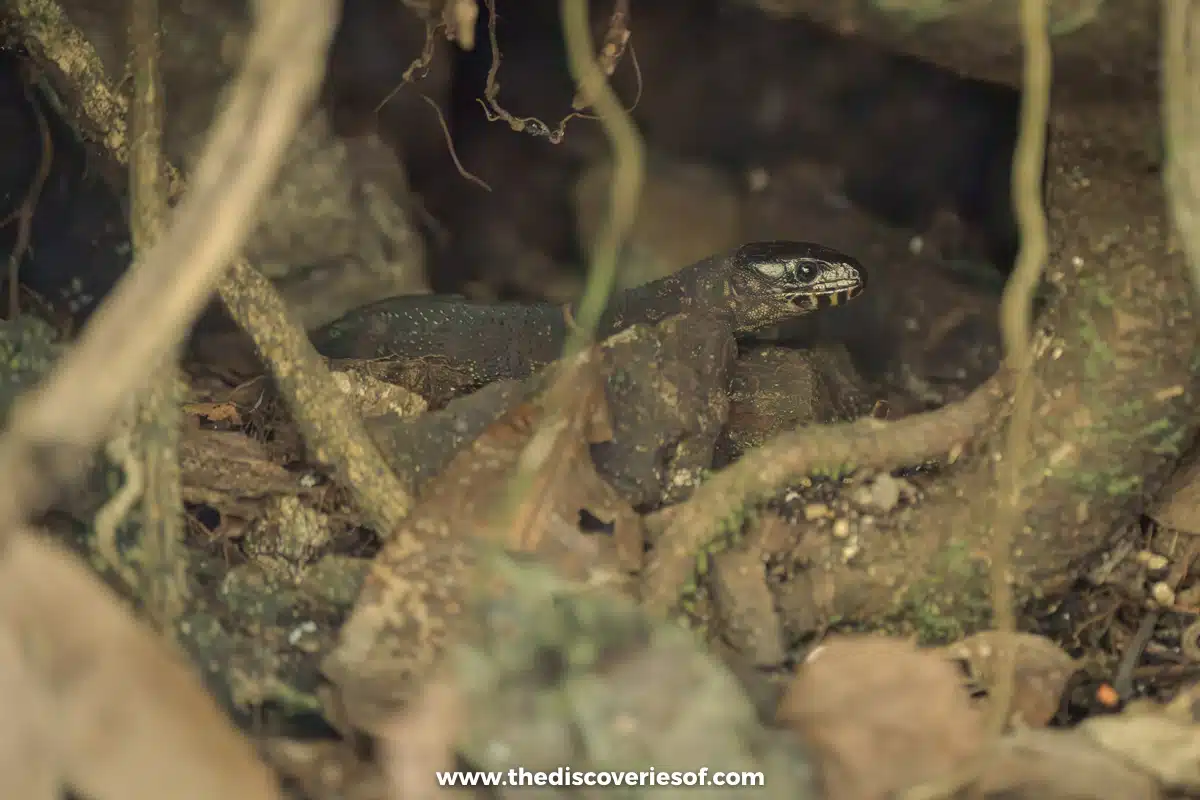
Self-Guided or Tour?
You can visit the jungles and beaches with or without a guide. But no matter how you visit, be sure to add Manuel Antonio National Park to your trip.
So, which is the best? Here’s a quick look at each.
Self-Guided Visit
Self-guided visits are a popular option for people who want a D.I.Y. approach to spotting and photographing wildlife.
To be honest, the park is small enough and has well-marked trails, so this isn’t a bad option. There’s only one main path, so it’s pretty difficult to get lost.
You can still see monkeys, toucans, and more elusive animals. Bring binoculars and look for big groups gathered on the trail (you can likely see whatever wildlife they spotted, too).
If you do visit on your own, buy your Manuel Antonio National Park tickets online at least one week in advance and drive as close to the entrance as possible before parking (some of the earlier lots are pricey and too far away).
Top Tip
When you book your tickets, use a desktop. I thought it was frankly a giant headache on my phone, so don’t waste your time.
Going With a Tour
I did a little internal back and forth about going solo or hiring a guide, and in the end, I settled on going with an expert. I’m glad I did.
Going with a guide means they spot things you likely won’t. They also have telescopes and are happy to help you borrow them for a closer look.
If you’re apprehensive to go with a guide because you want to explore the park on your own, don’t worry. You’ll have plenty of time to walk around Manuel Antonio on your own after your tour is done.
Things to Know Before Your Visit
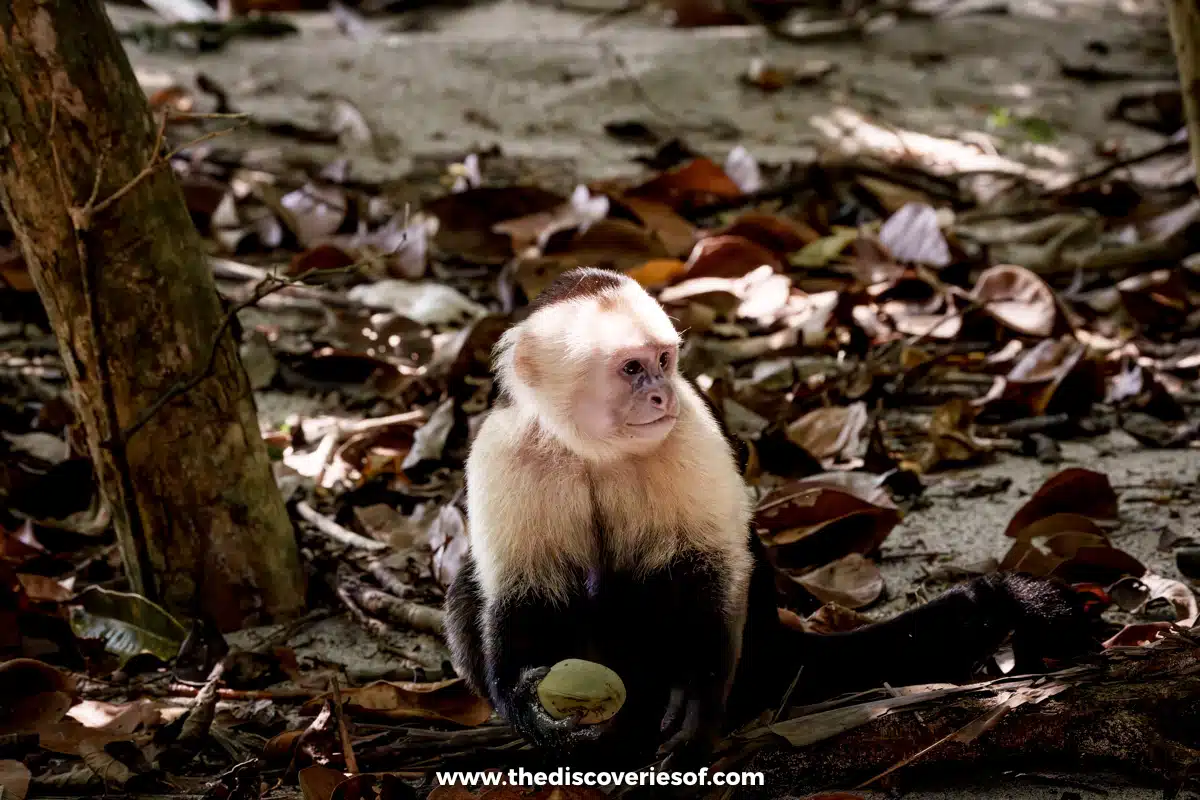
- This park gets extremely busy. Book at least a week ahead, as they limit how many people get in each hour.
- Whatever time you enter does not affect when you leave. But the park closes at 4 pm, and you need to be out at this time; plan accordingly.
- There’s one main path through the park, so it’s pretty difficult to get lost.
- Carry binoculars and a camera with a lens to spot and photograph wildlife in the park.
- Speaking of photos… leave your drone at home. You can’t bring it into the park, but you can use the lockers if you accidentally bring it.
- No food is allowed inside the park. Why? Monkeys. Lots of them. Monkeys will confiscate it in minutes (and park rangers will not be happy about it).
- Cigarettes, lighters, and single-use plastic are all banned from the park.
- Don’t plan to visit on a Tuesday. The park is closed one day each week.
Take a Day Trip to Rainmaker Conservation Park
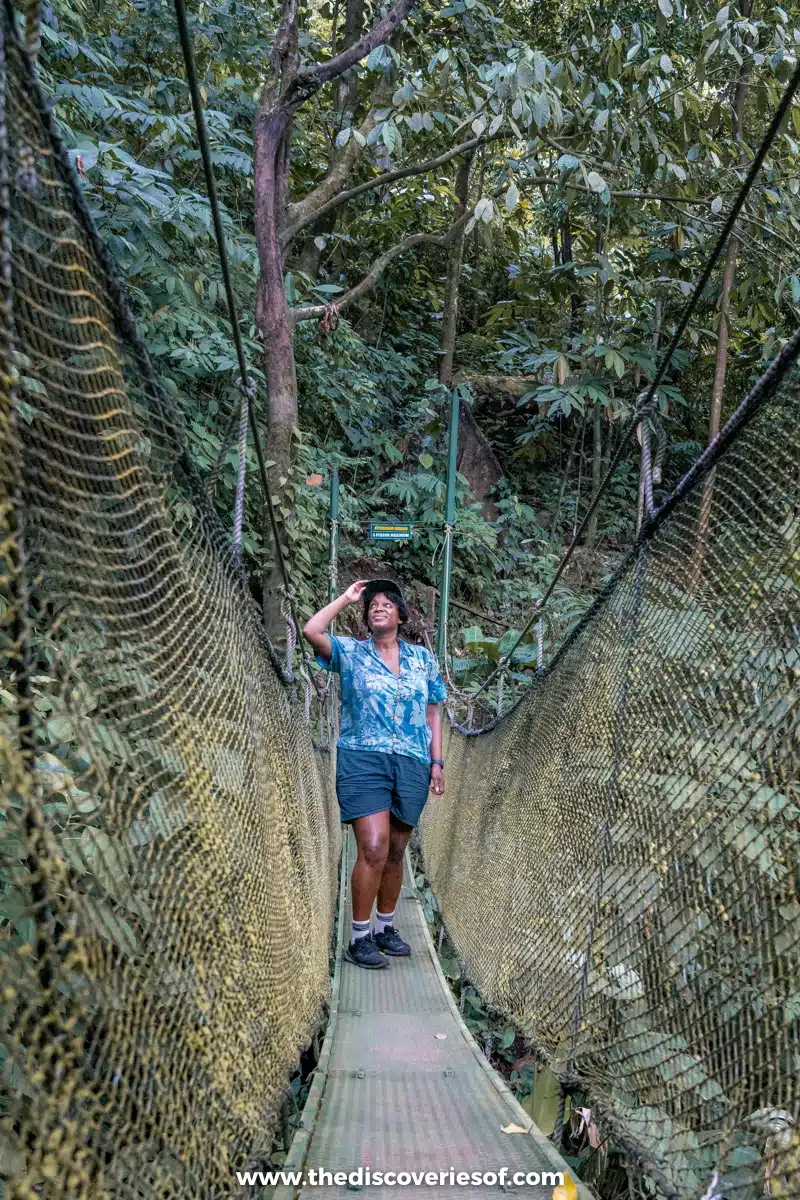
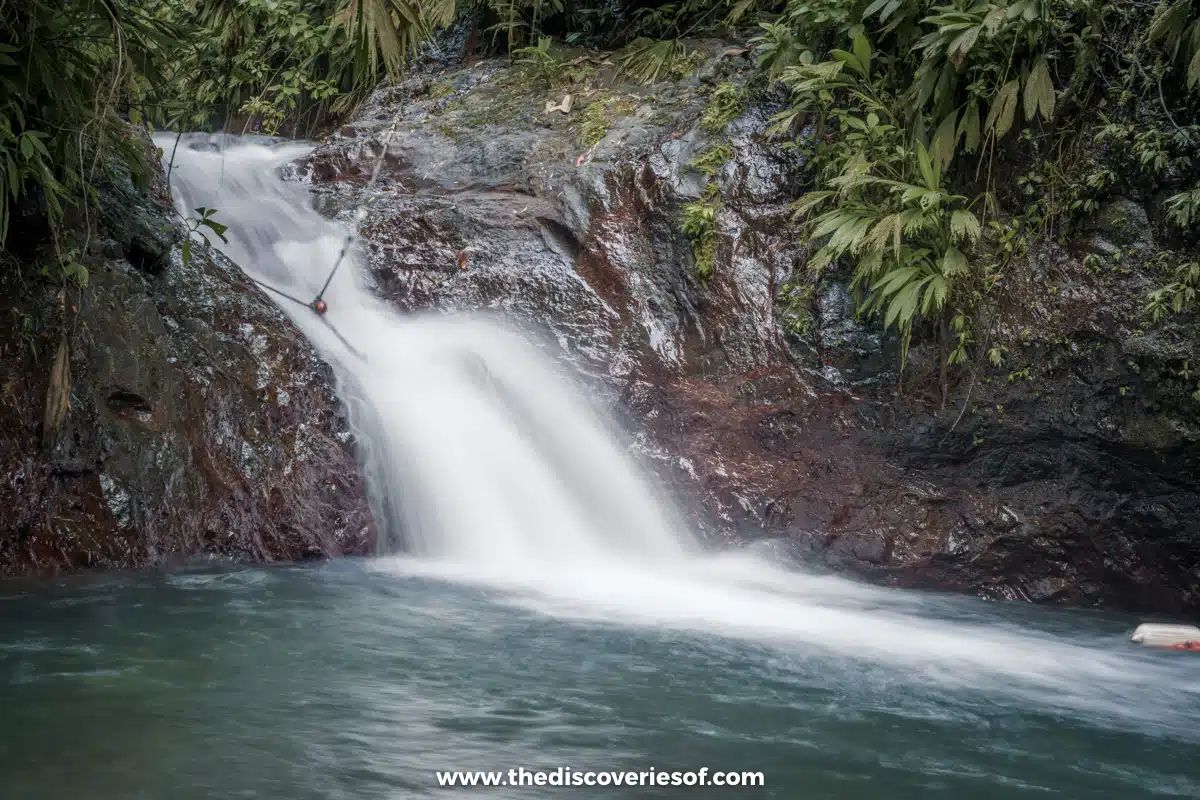
If there’s a day trip you just have to schedule into your Manuel Antonio trip, it’s to Rainmaker Conservation Park.
The 1,500-acre private nature reserve isn’t all that big, but it’s packed with incredible wildlife and a diverse array of plants, including more than a few rare and endangered species.
Make your way along the canopy walkway, and you’ll get an up-close look at primary and secondary rainforests and all the creatures that live up high.
This park has over 300 bird species, so you will want your best lens. I saw hummingbirds, parrots, toucans, and even elusive species like antbirds and manakins.
I just went on my own, and it was $22 to enter, with well-marked trails leading around the park. I arrived at the end of the day, and there were hardly any people there, making it a great 1-2 combo with Manuel Antonio National Park if you’re short on time.
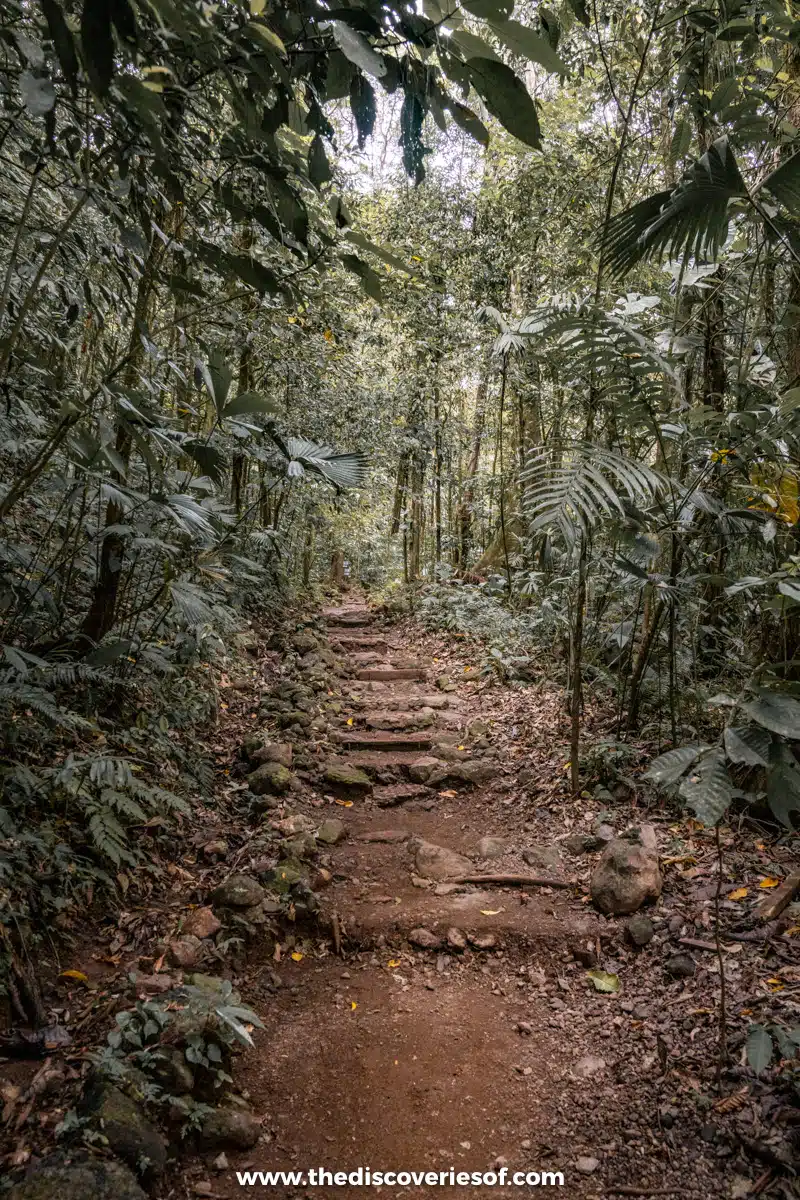
The 1.5-mile hike is just teeming with waterfalls and natural pools nestled within the forest – we saw one beautiful waterfall after another. You can even hop on into a natural pool on a hotter day. Why not?
Keep your eyes open for snakes, dart frogs, and butterflies, as the tropical jungle is full of life.
It’s only about a 30-40 minute drive from town, making it an easy addition to any itinerary.
Lounge at Playa Espadilla
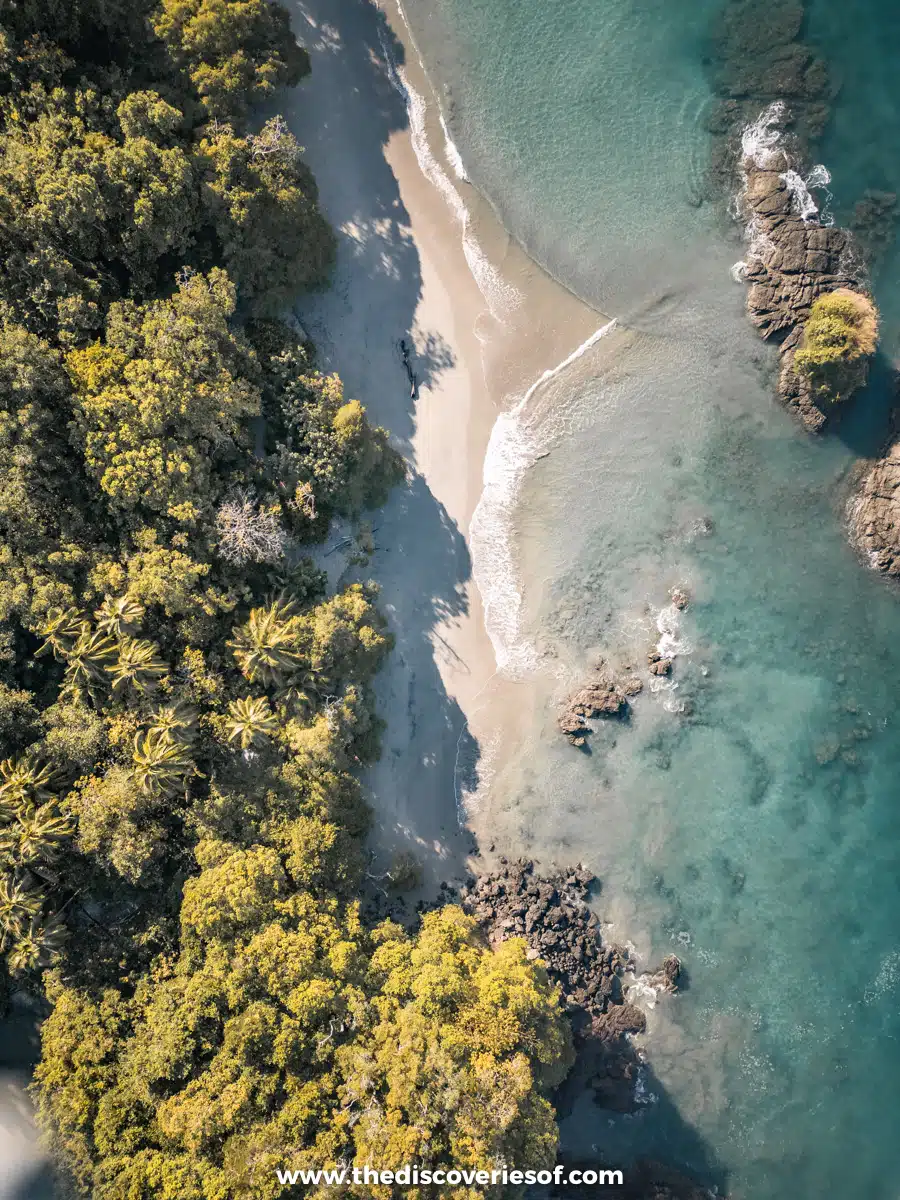
One reason I think people need to stay longer than a day in Manuel Antonio is to schedule a day at Playa Espadilla.
Some beaches allow you to experience everything in a few minutes, this large stretch of white sands just outside of the park offers plenty to do all day long.
If you’re keen on adventure and want to go water skiing or take surf lessons, this is where to do it. We opted for a pair of loungers and cover (at a rather pricey $25), but it was perfect for lazing on the shores, peering out at the Pacific Ocean.
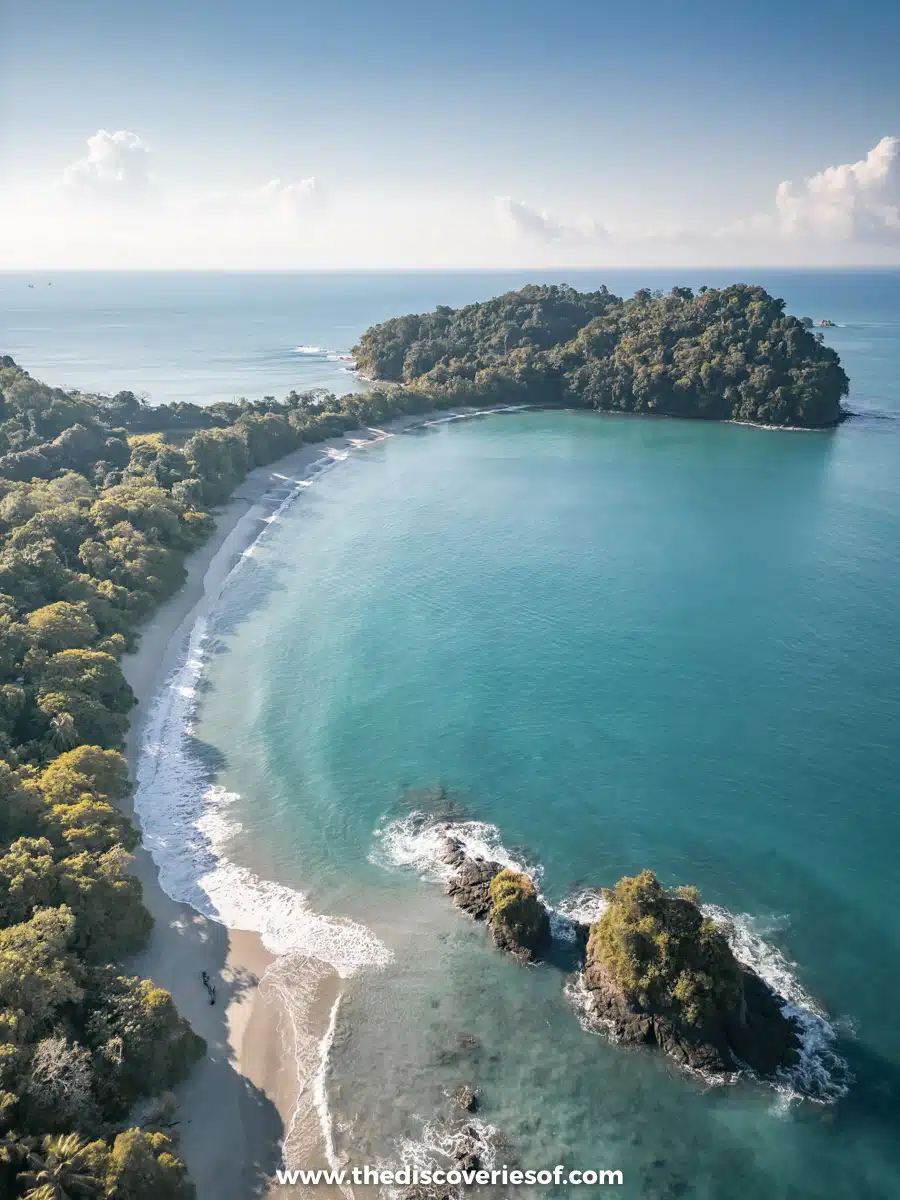
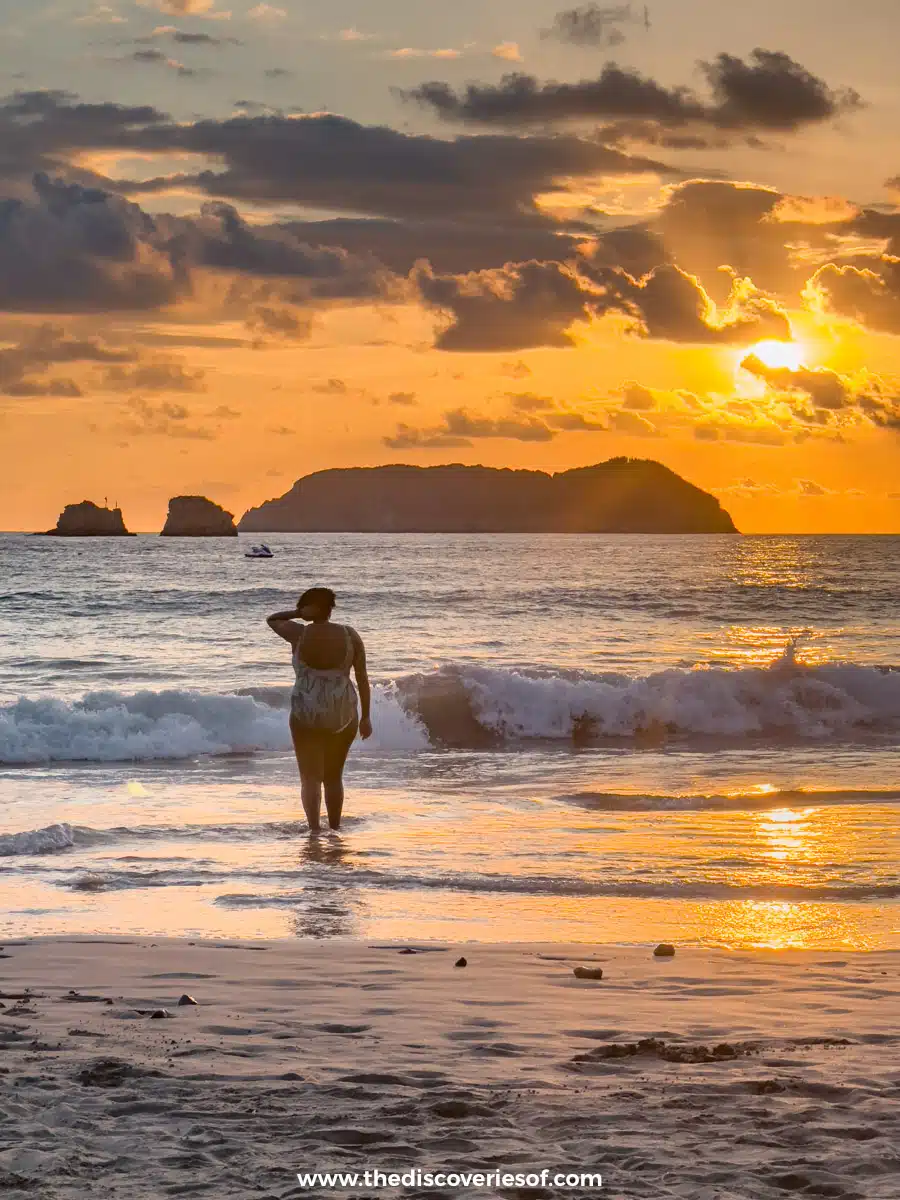
I had a wonderful day and was ready to head back to the hotel when I had a sneaking suspicion that we should stay for the sunset. Bingo.
Look at a Manuel Antonio National Park map, and you’ll see a wide open bay just north of the park. Due to it facing nearly due west, the sun danced off the water with an orange-red glow that was absolutely stunning.
Visit Playa Biesanz
Playa Biesanz is a short five-minute walk outside of town, but it is well worth the time. It’s a perfect place for kicking back on the white sands, staring out at impossibly beautiful green-blue waters.
I loved spending time at this semi-secret local favourite, partially because there are far fewer people here. But it’s also the best place in the area to see wildlife underwater.
Bring your snorkel gear (or rent some on the beach if you left it at home).
Snorkel or free dive, and you’re treated to a coral reef that’s home to some underwater treasures. Keep an eye out for sea turtles, starfish, and colourful marine life below the surface.
Above water, you’ll watch pelicans soar overhead and (if you’re lucky) may spot a humpback whale in the distance. You may also see dolphins and rays if you take a guided boat tour.
Adventure at Canopy Safari Tour
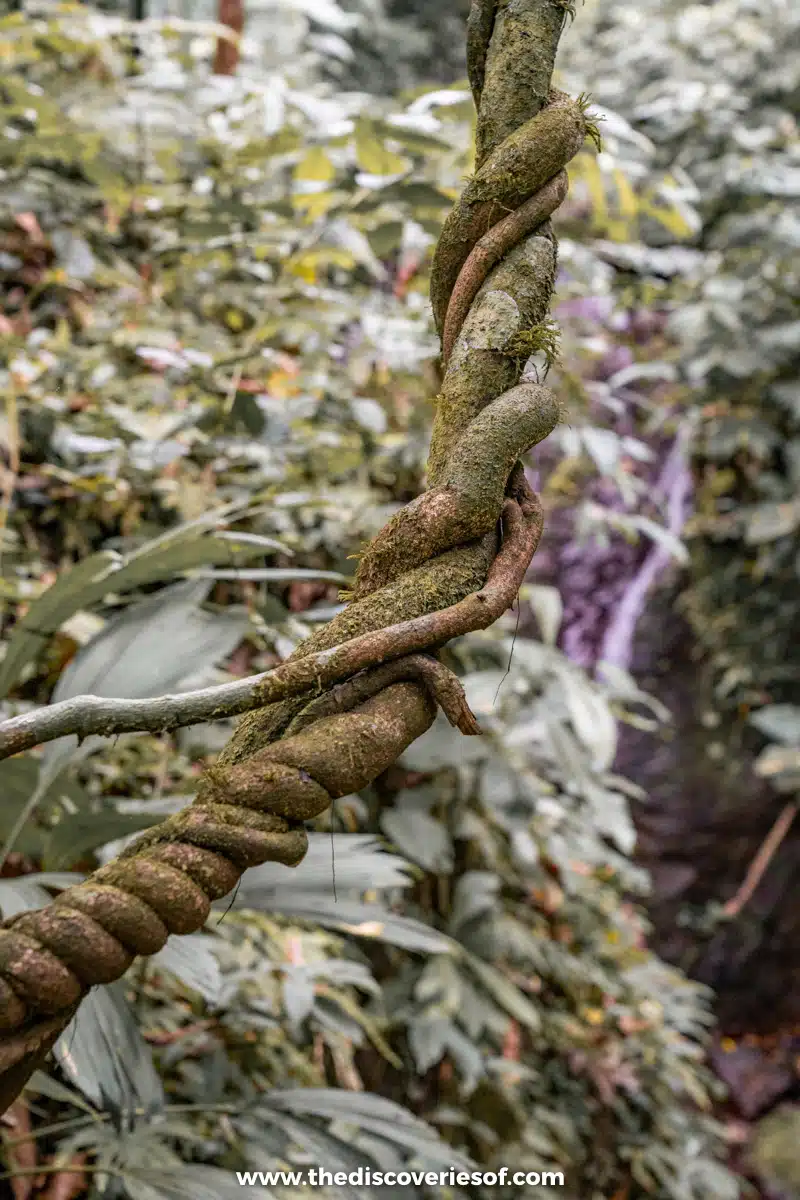
If your idea of getting up close with nature involves zipping around at an adventure park, Canopy Safari Tour is your place.
After you’ve taken your Manuel Antonio National Park photos, bring your camera to this longstanding adventure park that’s called Quepos home since 1997.
Rappel, swing, and zip your way around the jungle, keeping your eyes open for butterflies, birds, and monkeys in the trees.
Canopy Safari knows how to organise a tour, and you have several options to choose from. You can walk around the park grounds and check out their butterfly garden or set out on the Savegre Rafting Tour, where you’ll white water raft down a river before swimming under a waterfall.
Tours range from $35 for the basic park entrance to around $100 for the zip lining and rafting.
Visit Nauyaca Waterfall
You’ll need to drive about an hour from the national park, but Nauyaca Waterfall is one of the best things to do in Manuel Antonio.
I wasn’t able to get there on my last trip, but I heard from more than one fellow traveller that it’s truly spectacular. It’s a set of two waterfalls cascading 200 feet down a remote jungle backdrop.
Getting to Nauyaca Waterfall requires a little effort. Once you drive down the coast to Dominical, turn off on Highway 243. Take this until you see a ticket office.
The hike itself is about 6 miles, although many people opt to get a ride back on the paved road after visiting the waterfalls.
Hiking the trail allows you to experience the Costa Rican wilderness and makes the entrance to the blue-green waterfalls even more exciting.
Once you get there, you can further immerse yourself in the picture-perfect setting by jumping in the pools. Avoid the upper falls (it’s rather dangerous), but the pool below the lower fall is deep enough to swim in and offers epic views of the falls above.
Best Places to Eat and Drink in Manuel Antonio
The cuisine in Manuel Antonio offers a mix of local and international fare, with plenty to choose from.
I found good tacos and great Costa Rican options like plantains, ceviche, and grilled fish.
Cafe Agua Azul
££
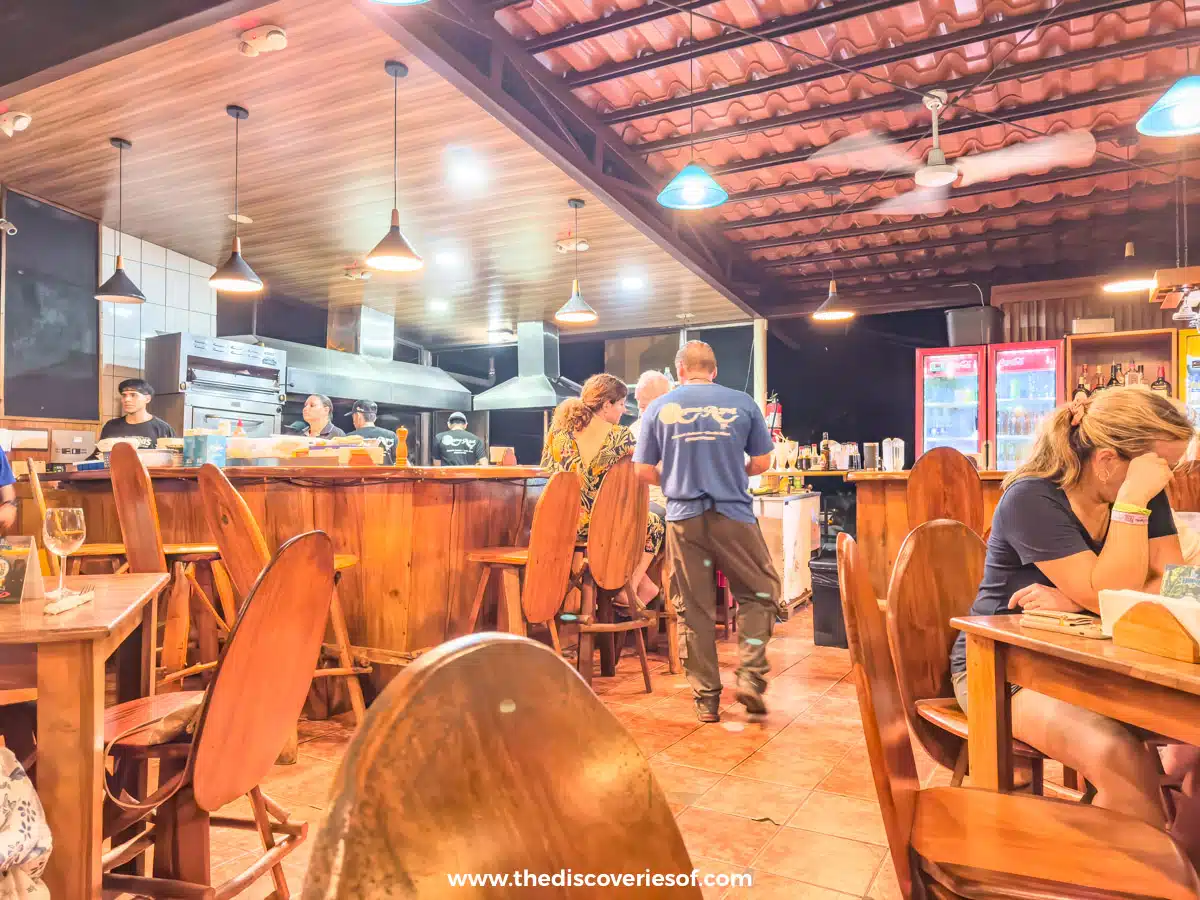
Head to the nearby town of Quepos for an enjoyable meal and some sundowners at this stylish little gem.
Easily one of my favourite restaurants in Manuel Antonio. The food at Cafe Agua Azul is fresh and flavourful, and the views are dynamite.
The menu has some interesting local and international options, with a focus on quality ingredients. There are lots of veggies on the menu (a huge plus) and plenty of seafood.
Try the plantain tower, a stack of deliciously fried plantains with guacamole on top. Then, order any of the seafood dishes or a plate of tacos.
Cocktails are fun and refreshing, with lots of frozen bevvies and a great marg.
Food Truck “En Todas”
££
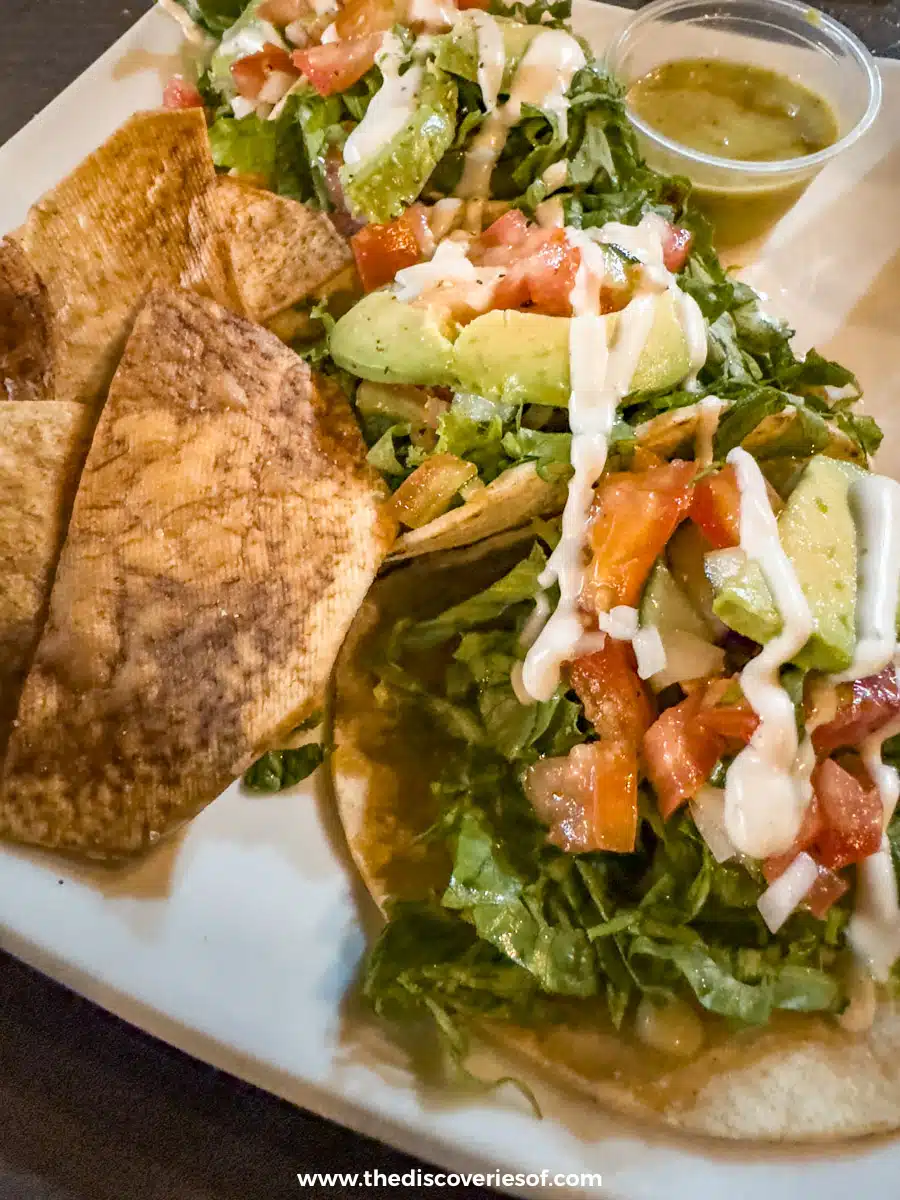
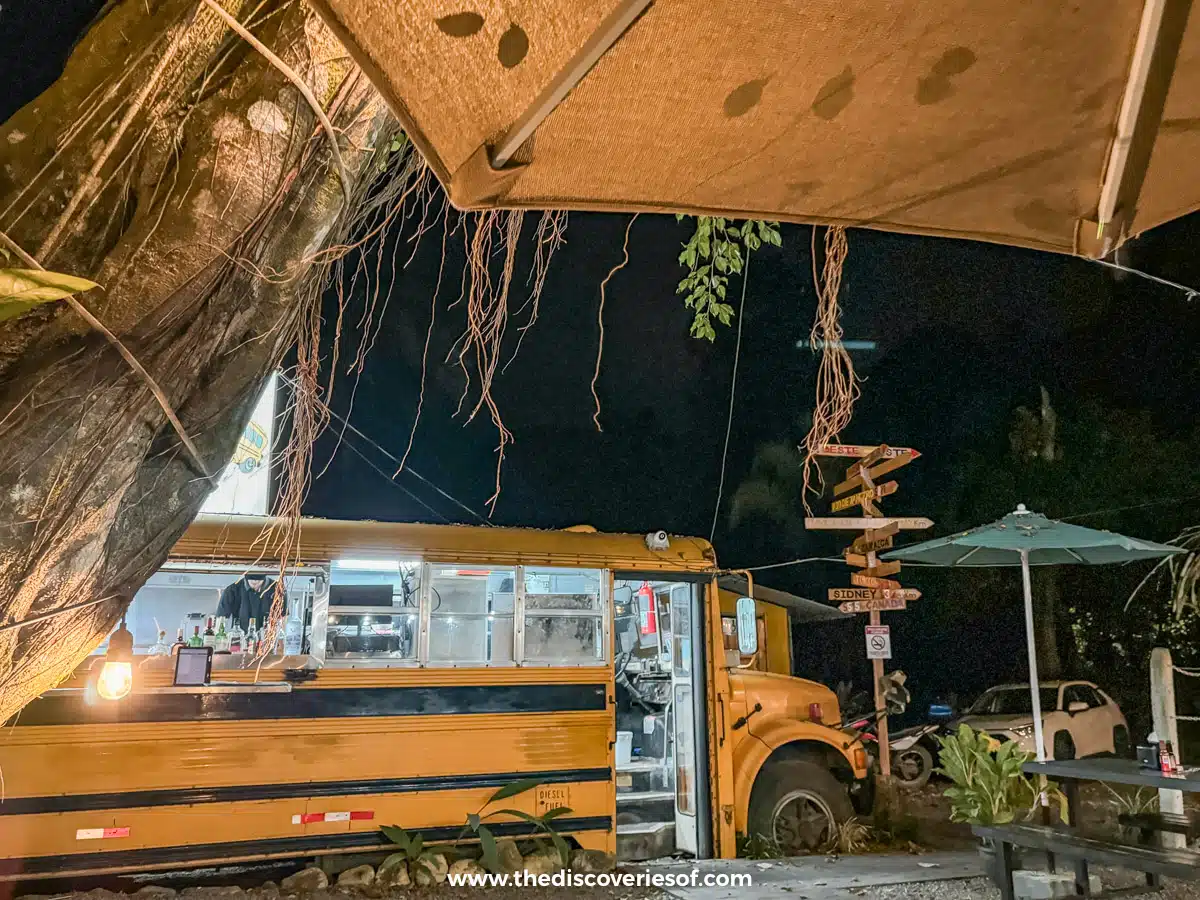
Located only a few feet away from Manuel Antonio Beach, this is my go-to for a quick lunch or dinner after visiting the national park.
The funky school bus setting has plenty of outdoor seating and is only a short walk from the sandy beach (though watch out for mischievous capuchin monkeys if you choose the latter).
Expect a menu of snacks and fried food like fried calamari, chicken wings, and great tacos.
You can order tacos or a quesadilla for around $10-$12 (₡5,000-₡6,0000), which isn’t that bad considering you’re steps away from the most popular beach.
Go with the fish or shrimp. After all, you’re only a short walk from the Pacific Ocean.
Top Tip
The sign for the restaurant actually says “Magic Bus,” so look for this rather than “En Todas.”
La Vela Boutique Hotel Restaurant
££
You know I like to venture out from my hotel to find food, but La Vela makes it a bit too easy to just stay put.
In the morning, there’s a limited buffet, but everything is pretty good. I recommend going with the made-to-order options, which are cooked to perfection. Get the pancakes, trust me.
During lunch and dinner, the restaurant transforms into a pizzeria, and a really good one at that. They use a brick oven to cook up some legitimately delicious pizzas that hit the spot after a day on the trails.
Service was super friendly, and they’re happy to hook you up with insider knowledge on where to go to find hidden gems in the area.
El Patio de Café Milagro
££
This popular patio restaurant in Quepos has some of the best local Costa Rican fare near the park. Most of the seating is outdoors, but there’s a tent you can sit under if it’s raining.
They open early (6:30 am), so it’s a great place to get breakfast, but they also stay open late for dinner.
Come here for Central American specialties like seafood cooked in coconut soup, ceviche, and grilled fish served with mashed malanga, otherwise known as taro.
Service is friendly, prices are reasonable, and it’s a perfect option any time of the day.
Know Before You Go: Practical Tips to Plan Your Manuel Antonio Trip
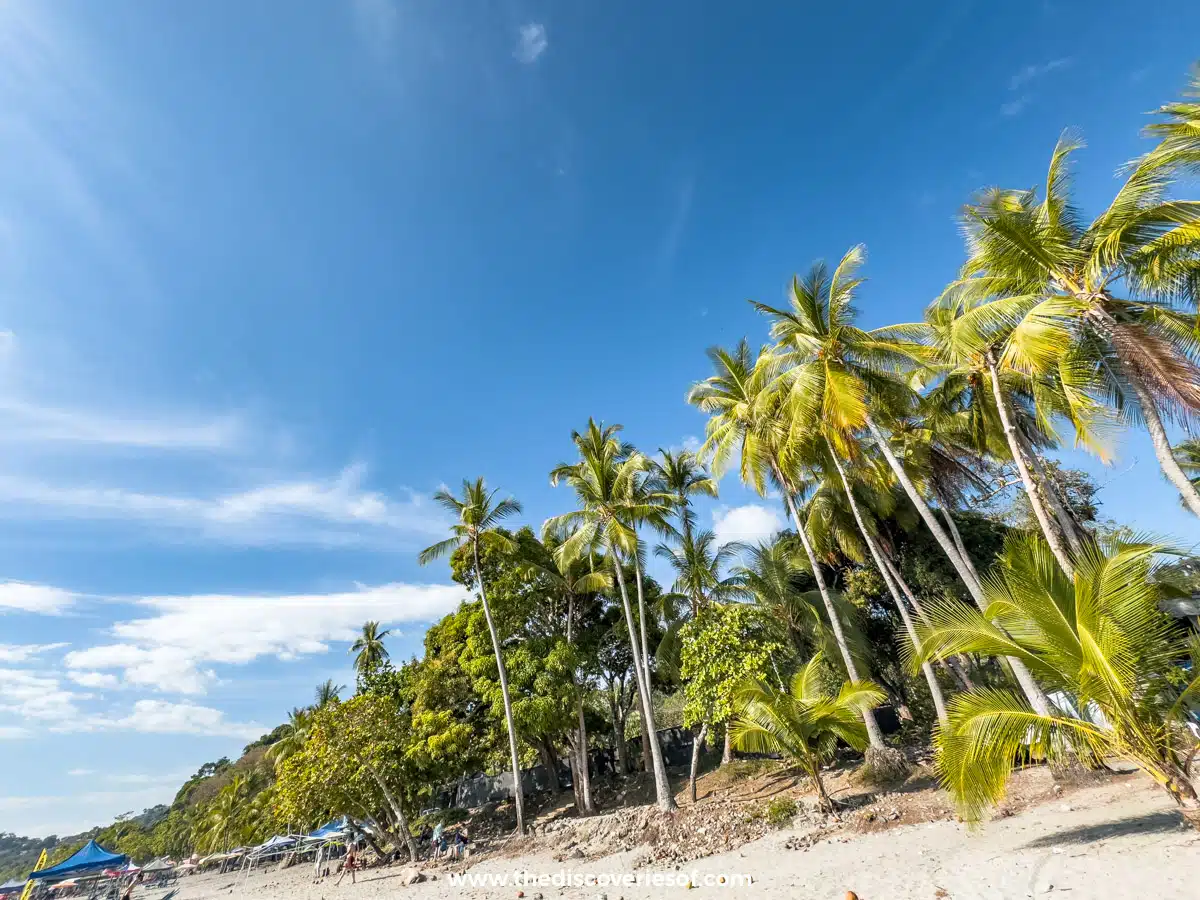
- Be sure to explore as much of the surrounding area as possible. Day trips to places like Rainmaker really add to the entire experience.
- Avoid walking around too late at night in Manuel Antonio or Quepos due to traffic and petty crime.
- Book hotel accommodations in advance if you’re visiting during peak tourist season (December to April).
Typical Cost of Travelling in Manuel Antonio
Expect to spend between $200 to $550 (₡102,900 to ₡282,800) per day with accommodations in Costa Rica on a mid-range basis. Add $100 (₡51,425) to $500 (₡179,990) more if you’re travelling on a luxury basis.
Average Daily Costs
- Hotel
- Mid-Range $100 to $350 (₡51,400 to ₡179,990)
- Luxury $500 to $800 (₡179,990 to ₡411,409)
- Food – $40 to $100 (₡20,570 to ₡51,425)
- Public Transport – $0.65 to $1.30 (₡335 to ₡665)
- Attractions – $20 to $25 (₡10,300 to ₡12,800)
- Tours – $40 to $150 (₡20,570 to ₡77,140)
How Long to Visit in Manuel Antonio?
You can visit Manuel Antonio on a day trip, but this will limit you mostly to the national park.
I strongly urge you to schedule at least an overnight stay, but extending your visit to 2-3 nights will allow you to visit Rainmaker and spend some time exploring the brilliant beaches, hotels, and restaurants around Manuel Antonio.
Best Time to Visit Manuel Antonio
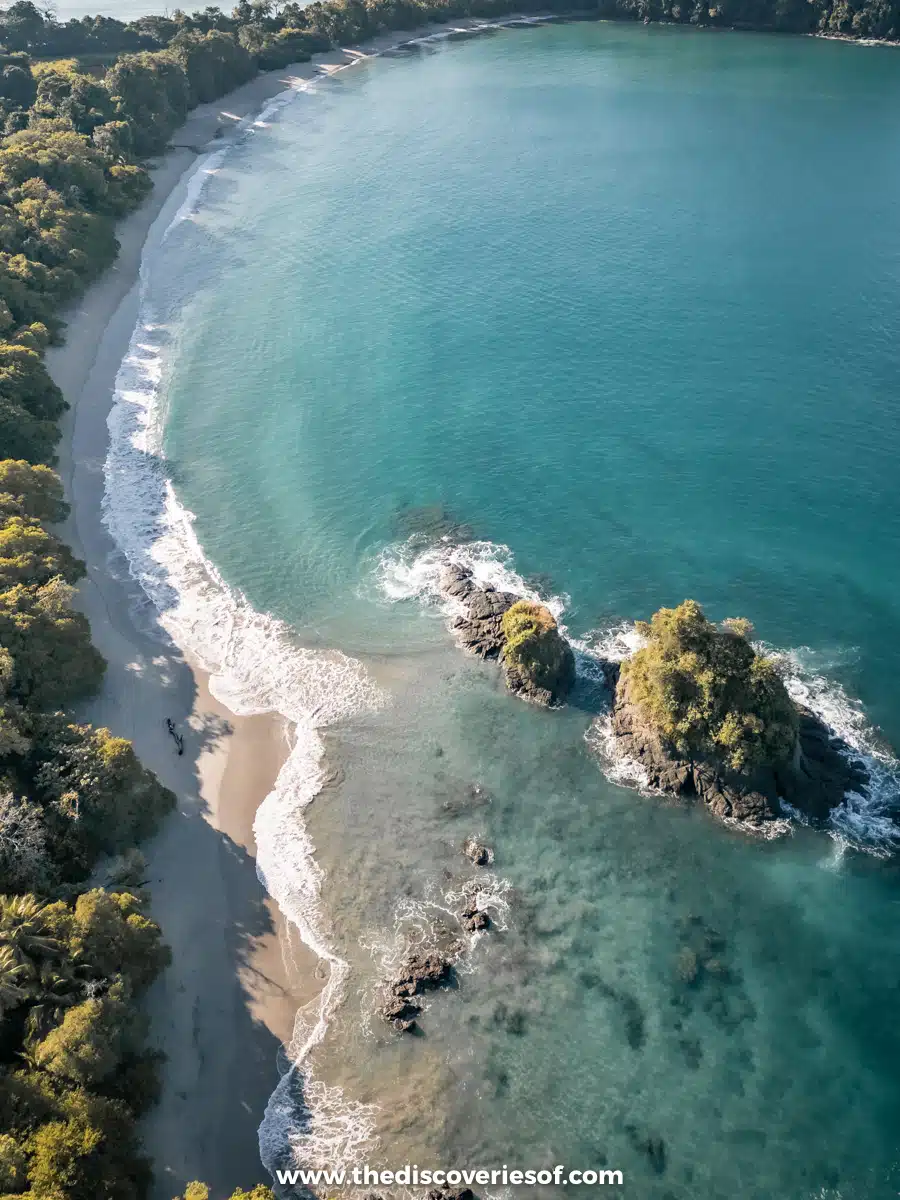
Dry season is the most popular time to visit, and I must say the beach weather was perfect.
It’s always pretty warm here, with temperatures consistently reaching highs between 25-28°C (77-82°F). But the chance of rain increases dramatically from April to November, so there’s a good chance you’ll need to grab your beach blanket and dash.
That said, if your main goal is to observe wildlife in the park, the rainy season offers lower rates and fewer people on the trails.
Where to Stay in Manuel Antonio
Most people stay near Espadilla Beach when visiting Manuel Antonio National Park in Costa Rica. I think this is the way to go because you’re a short drive from the park and the beaches really are fantastic.
Alternatively, Quepos has lots of accommodations and restaurants.
La Vela Boutique Hotel (Mid-Range)

La Vela Boutique Hotel is a nice resort with friendly staff and a great breakfast (the pancakes are fabulous). Bonus points? The restaurant turns into a pizzeria later in the day.
The location is really cool, right on the doorstep of the national park entrance. It also feels like a secret hideaway less than 150 metres to the beach.
The rooms are relatively pared back but comfy. Be sure to get a private terrace; it’s perfect for whiling away a couple of hours.
Makanda by the Sea Hotel (Luxury)
Go all out at this adults-only luxury hotel between Playa Sonia and Playa Monaco. Enjoy ocean views from a private balcony and enormous accommodations with canopy beds and marble bathrooms.
How to Get to Manuel Antonio?
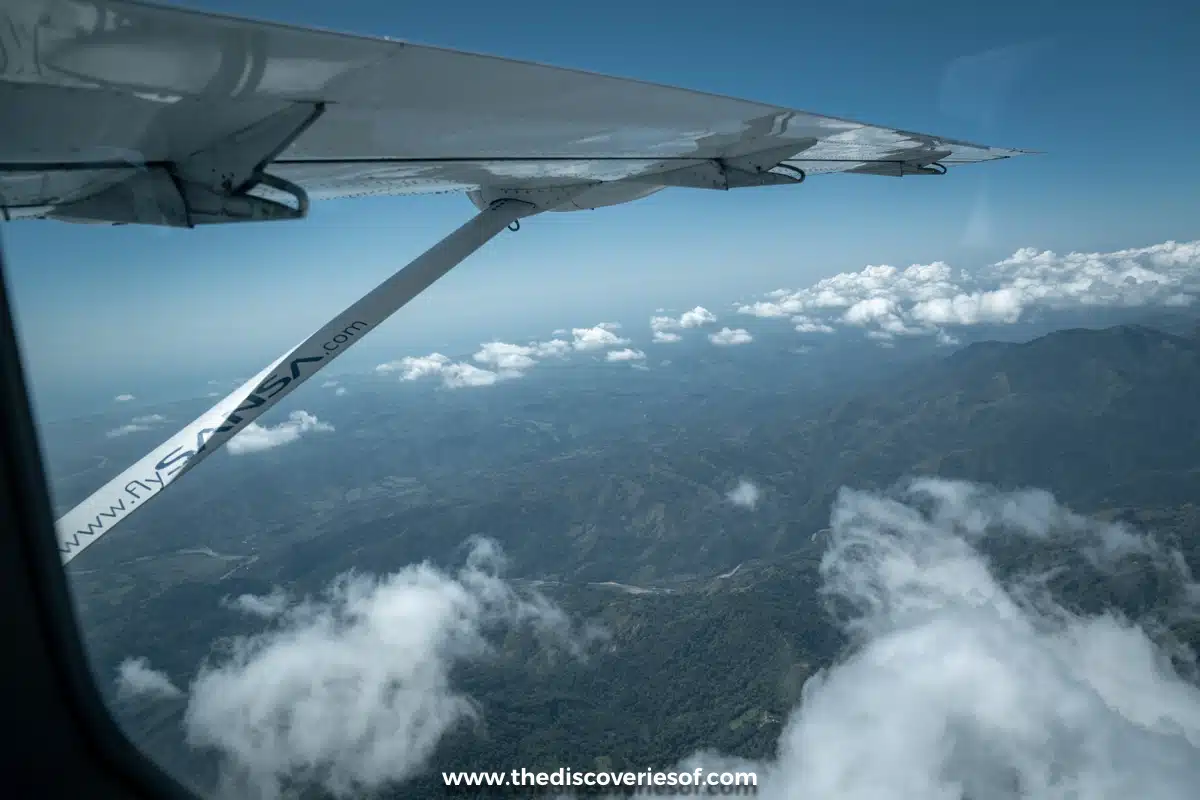
Take a Sansa Airlines flight from Juan Santamaría International Airport in San Jose (SJO) to Quepos (XQP) Airport, about 30 minutes from the park. Typically, a round-trip ticket ranges from $200 to $250 (₡102,850 to ₡128,560) and takes 30 minutes each way.
Alternatively, you can drive or take an Interbus shuttle. The bus takes around 3.5 hours and costs around $110 (56,570) round-trip.
Suggested Itineraries
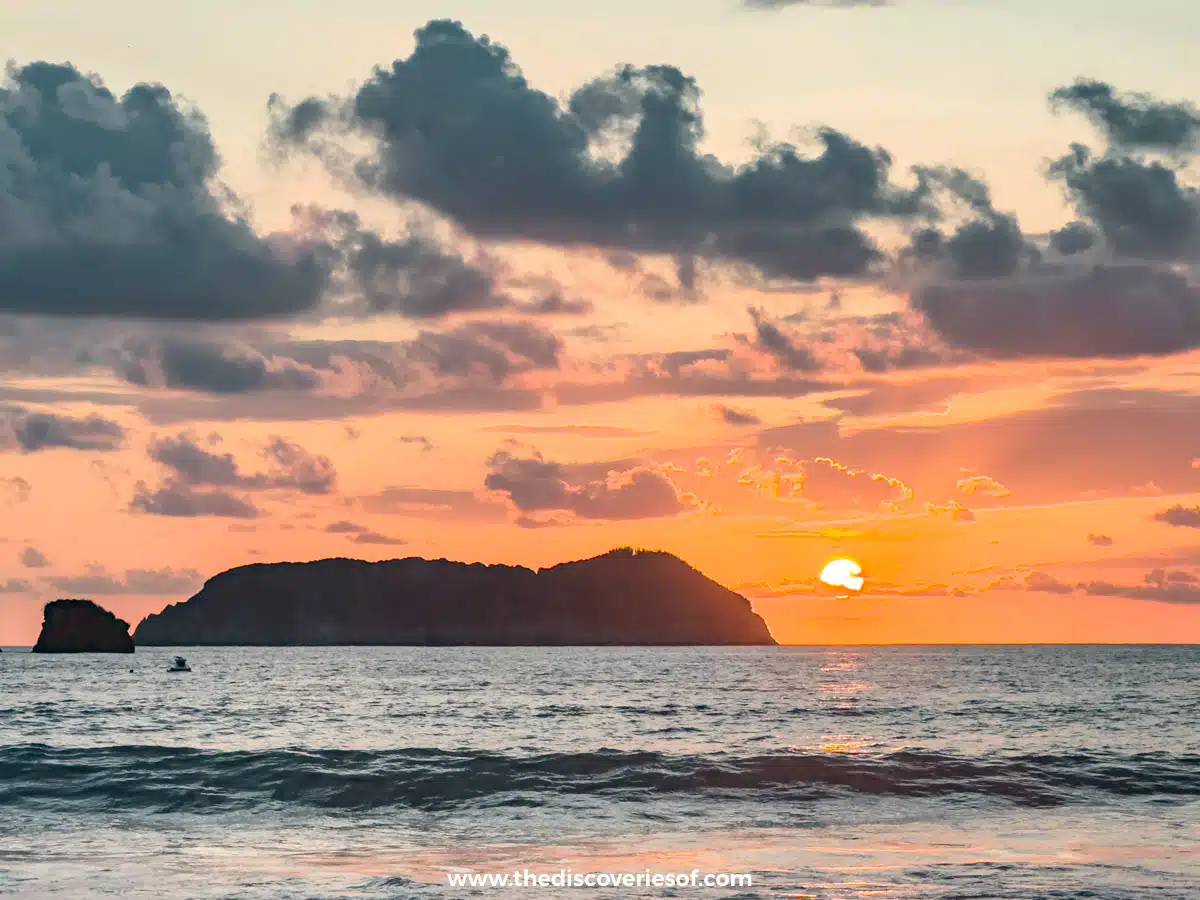
Afternoon in the Park
Manuel Antonio National Park – Lunch at the Park Cafe – Manuel Antonio Beach – Dinner at Food Truck “En Todas”
See the highlights of the park and beach on this efficient day trip.
Beaches and Wildlife
Wildlife Photography in Manuel Antonio National Park – Playa Manuel Antonio – Playa Espadilla Sur – Dinner at Cafe Agua Azul – Snorkelling at Playa Biesanz
Enjoy the beaches, towns, and national park.
Long Weekend Getaway
Guided Tour in Manuel Antonio National Park – Day Lounging at Playa Espadilla – Dinner and Drinks in Quepos – Canopy Safari Tour – Day Trip to Rainmaker
Extend your stay with a day trip and adventure park near Manuel Antonio.
Map
Read More Costa Rica Travel Guides
- Costa Rica Travel Guide
- 15 Wonderful Things to Do in Costa Rica
- 2 Days in Arenal, Costa Rica: The Perfect Weekend Arenal Itinerary
Love This? Save and Share on Pinterest!
